
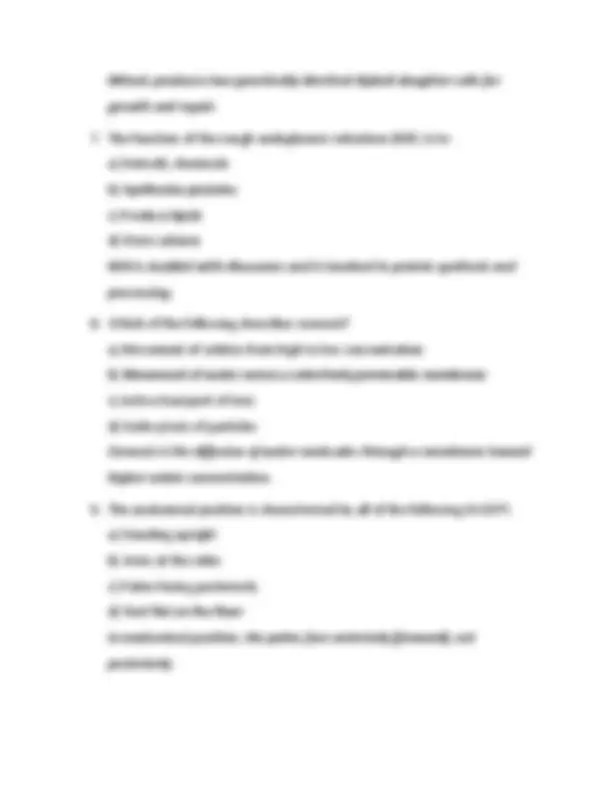
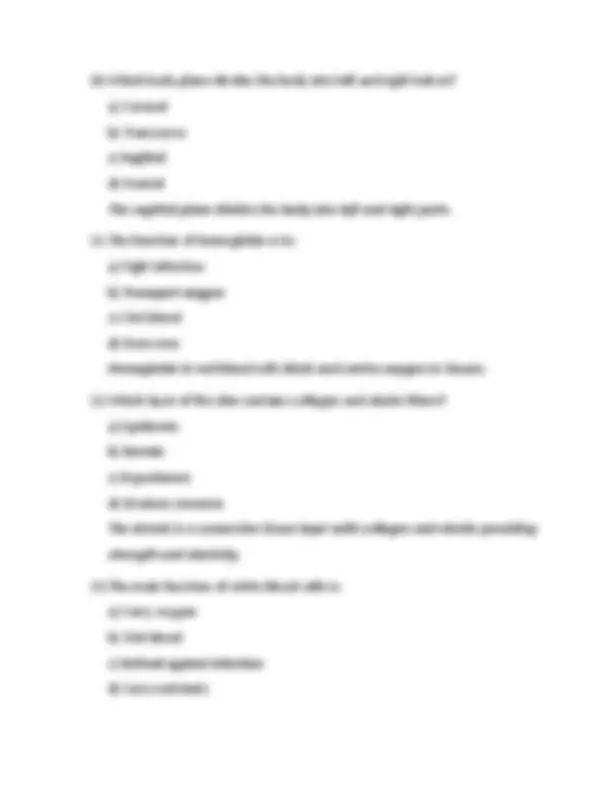
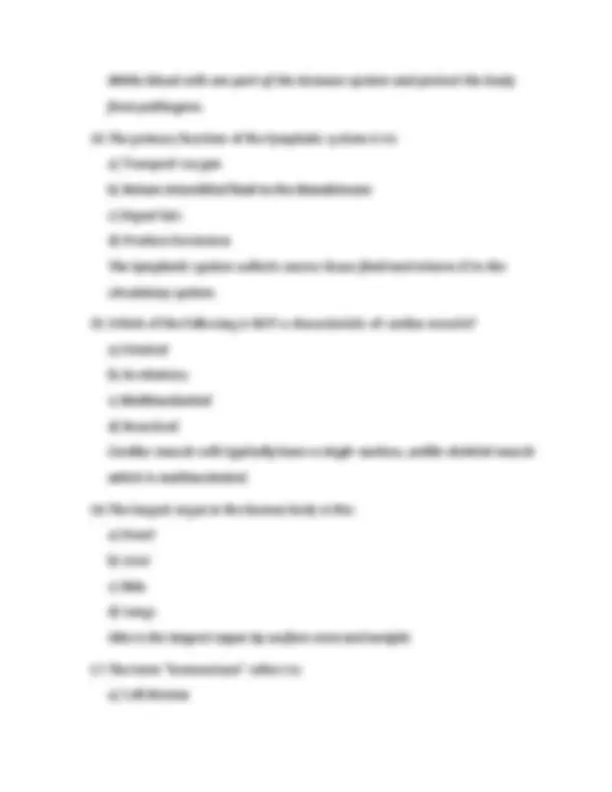
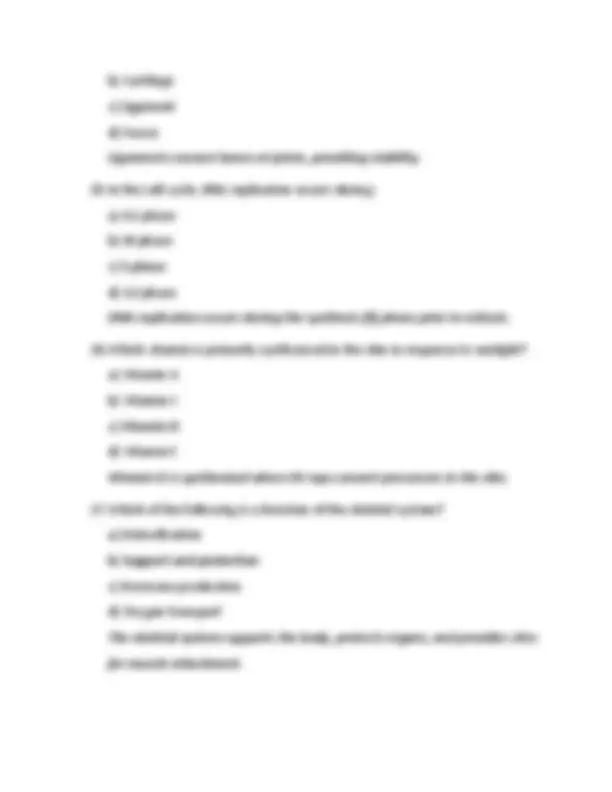
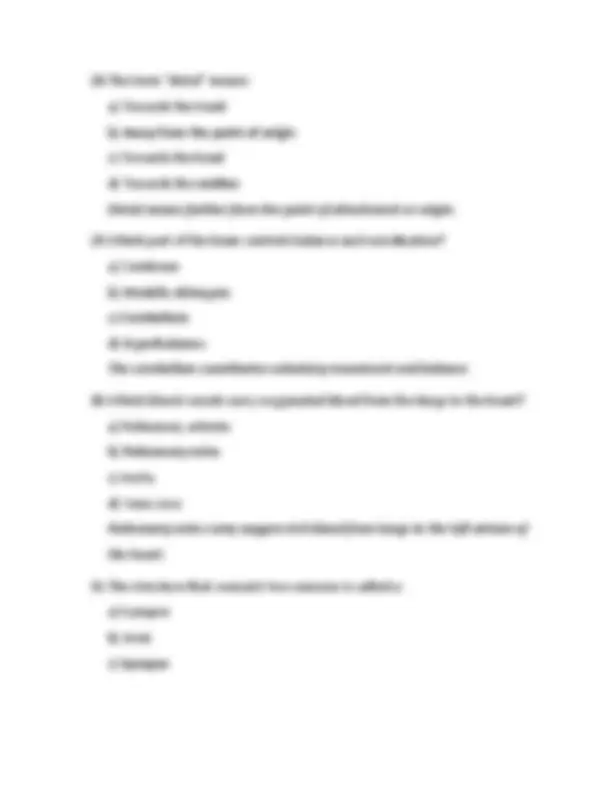
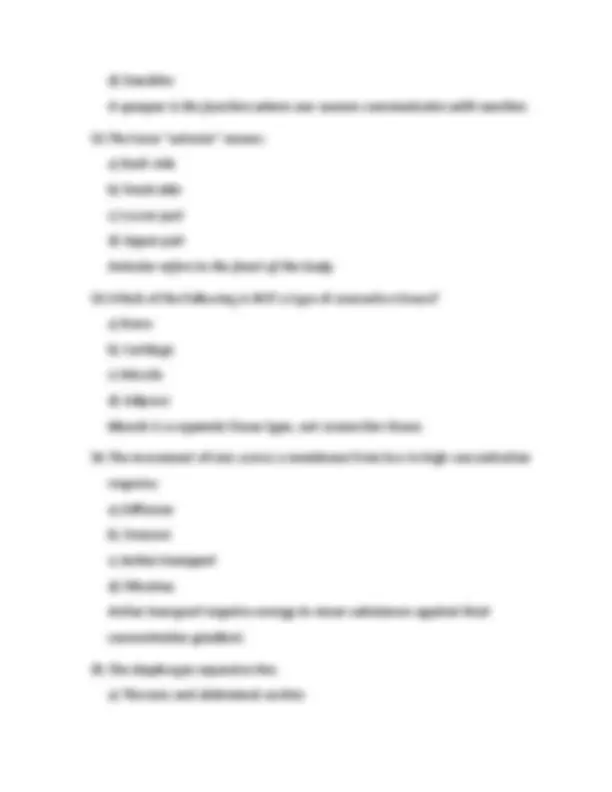
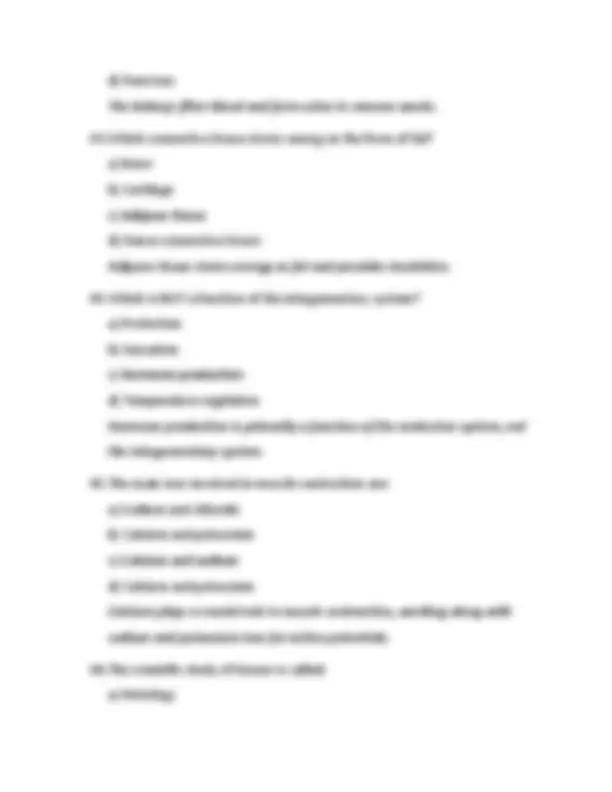
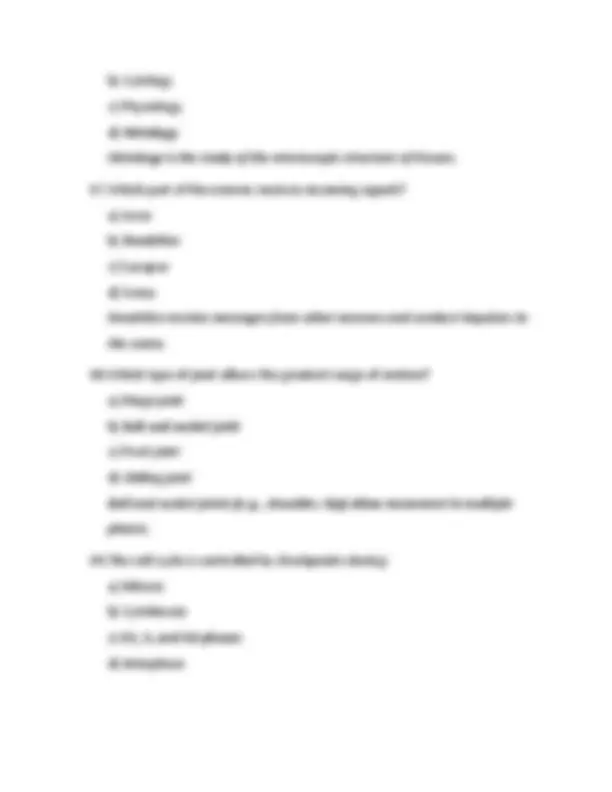
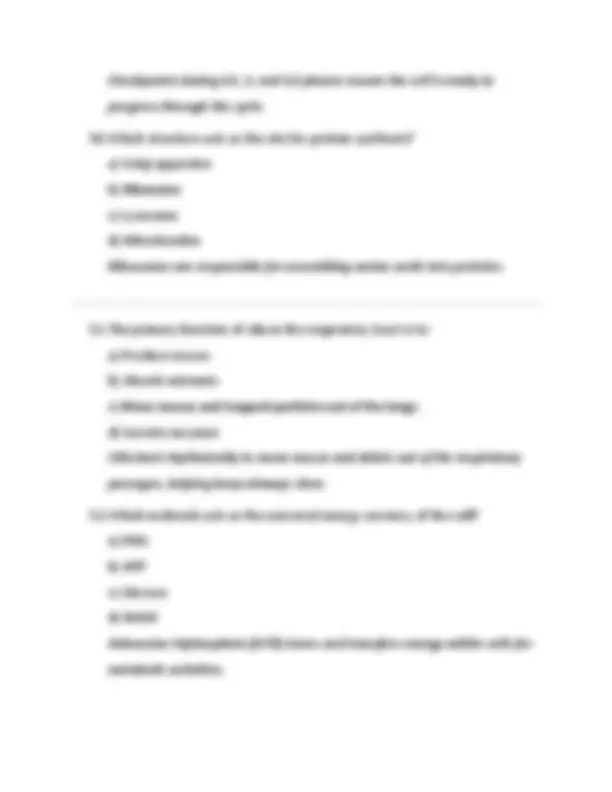
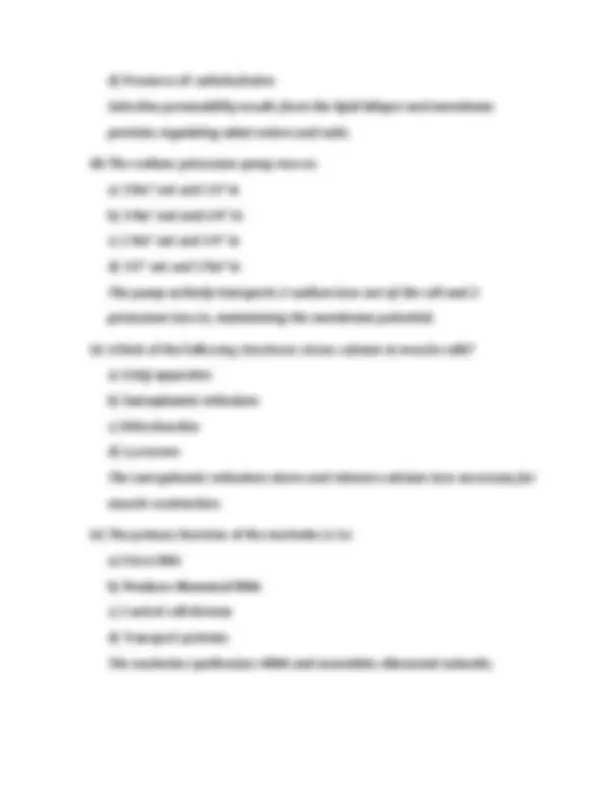
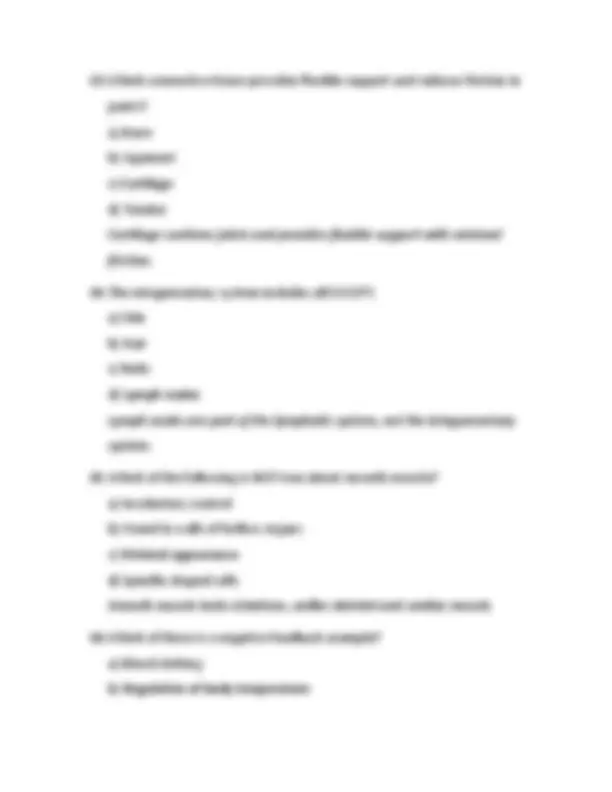
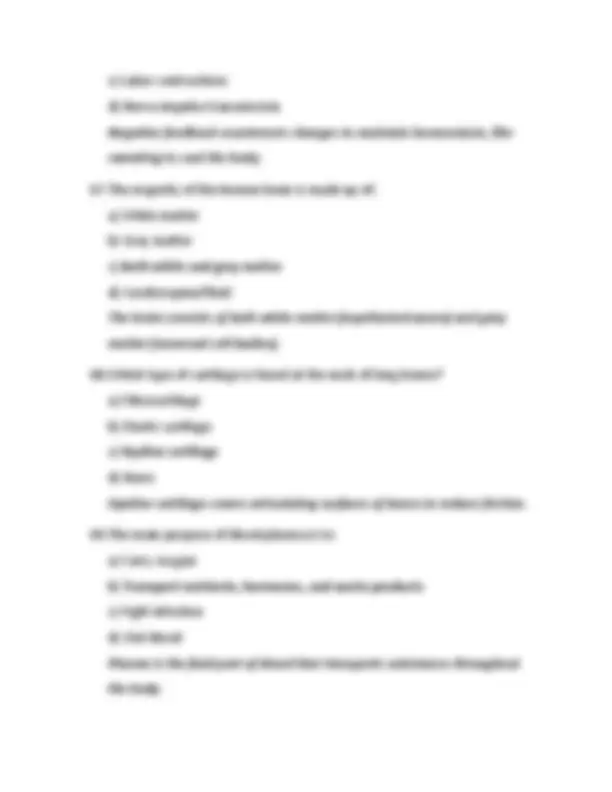
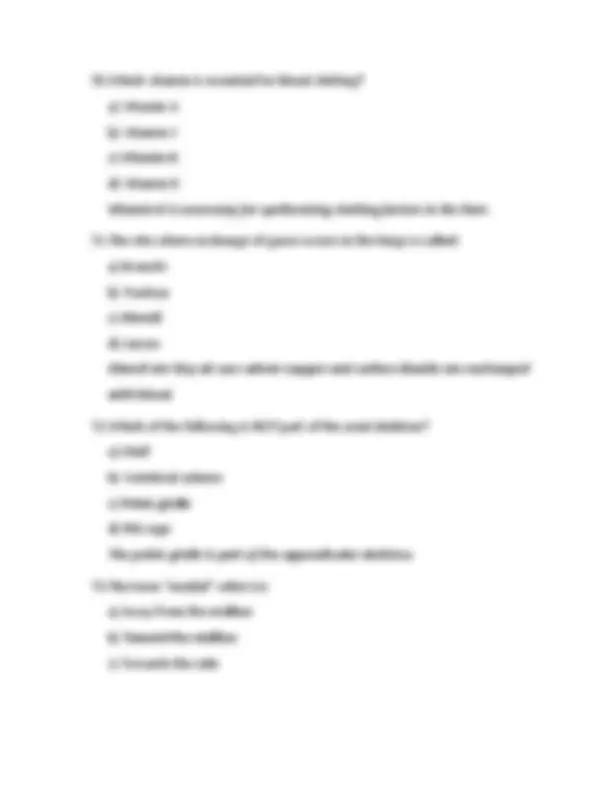
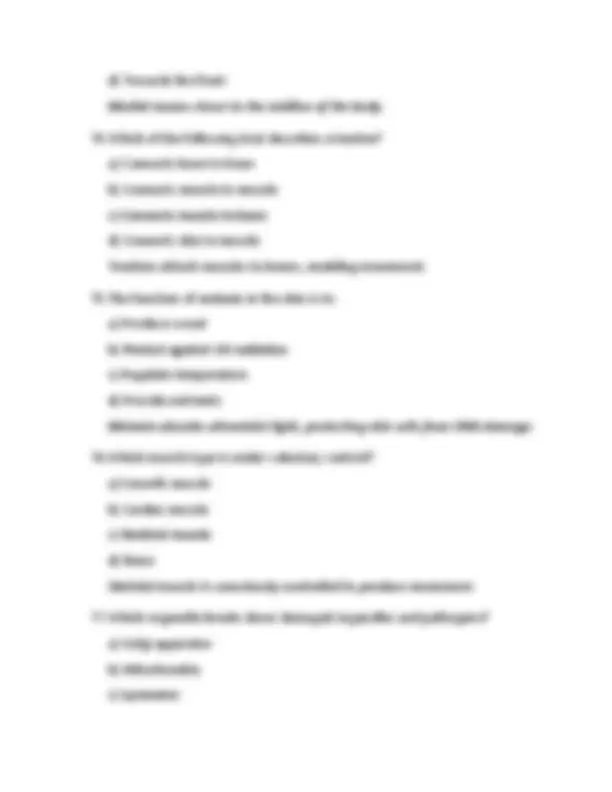
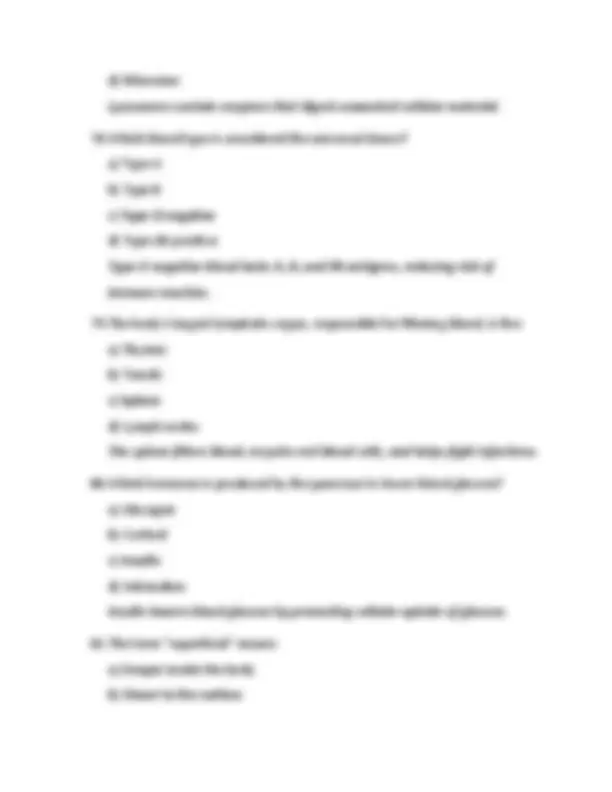
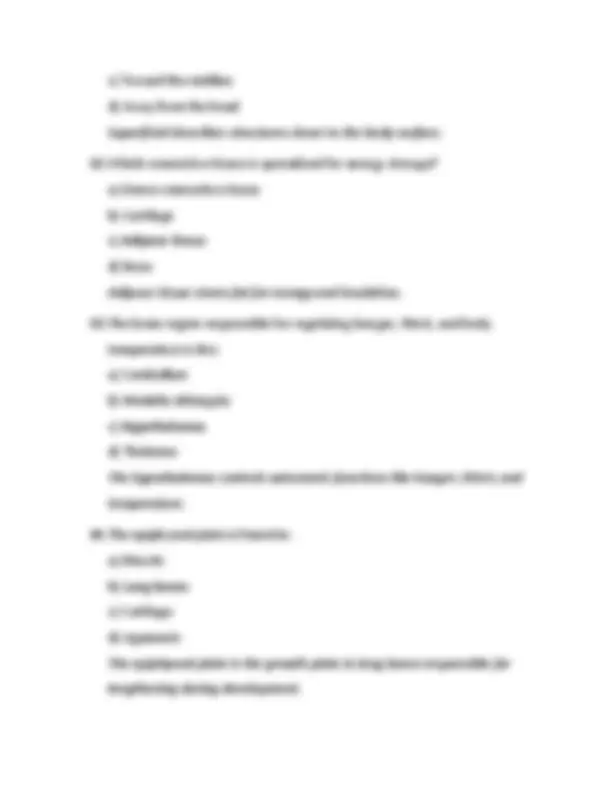
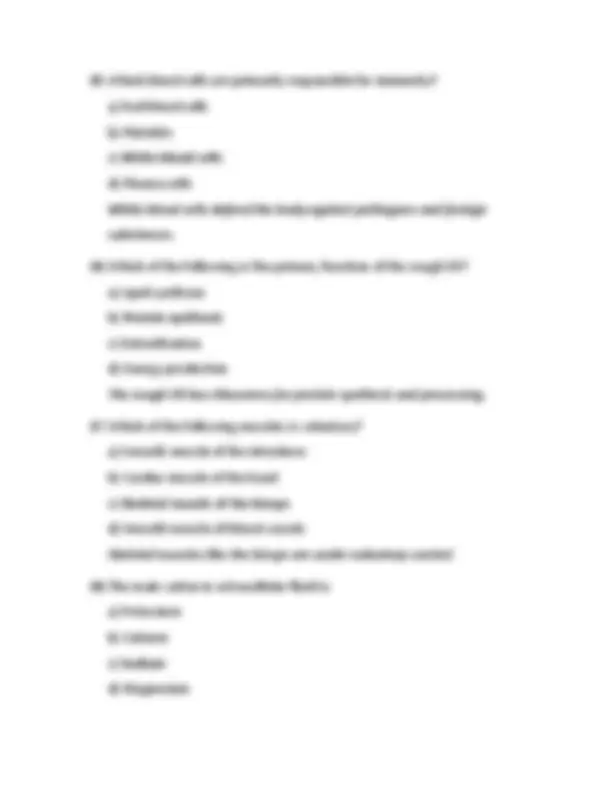
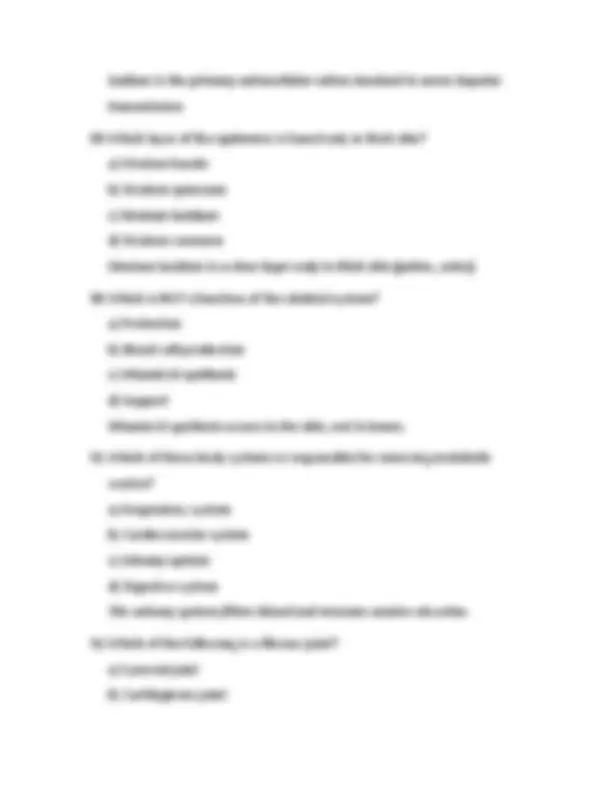
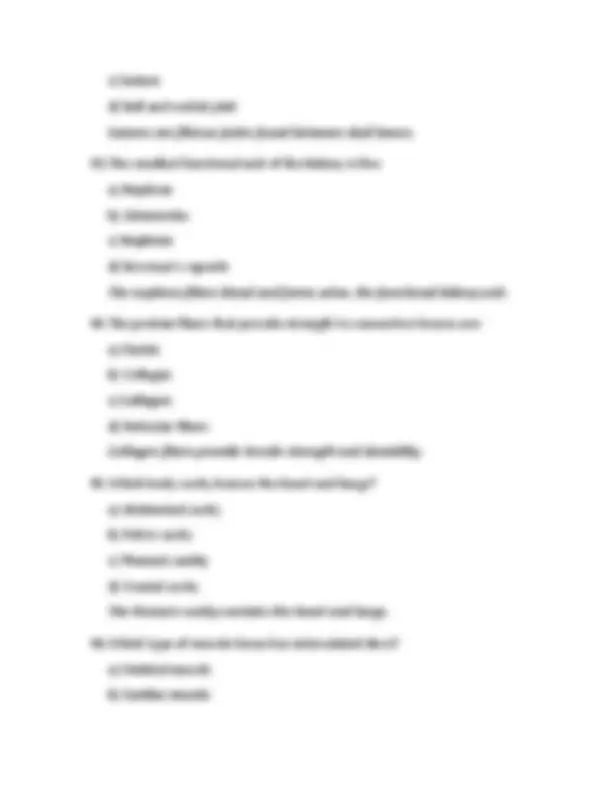
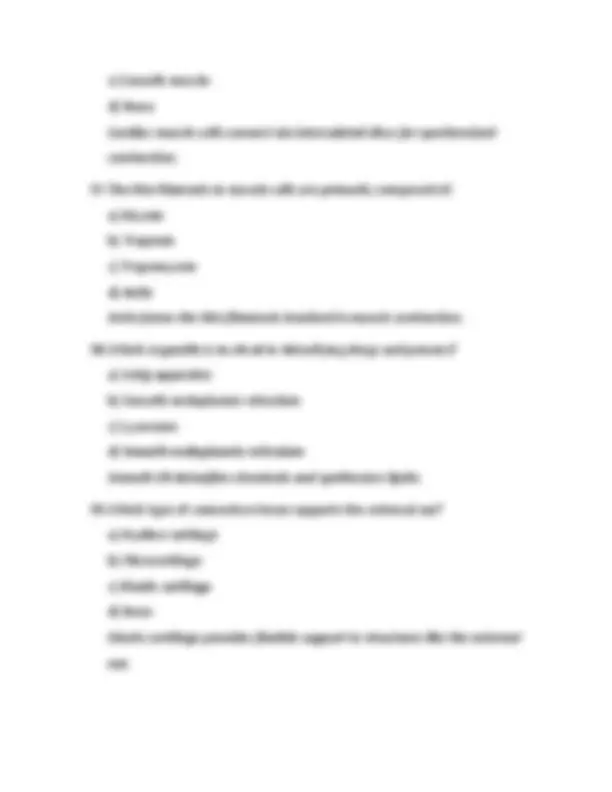
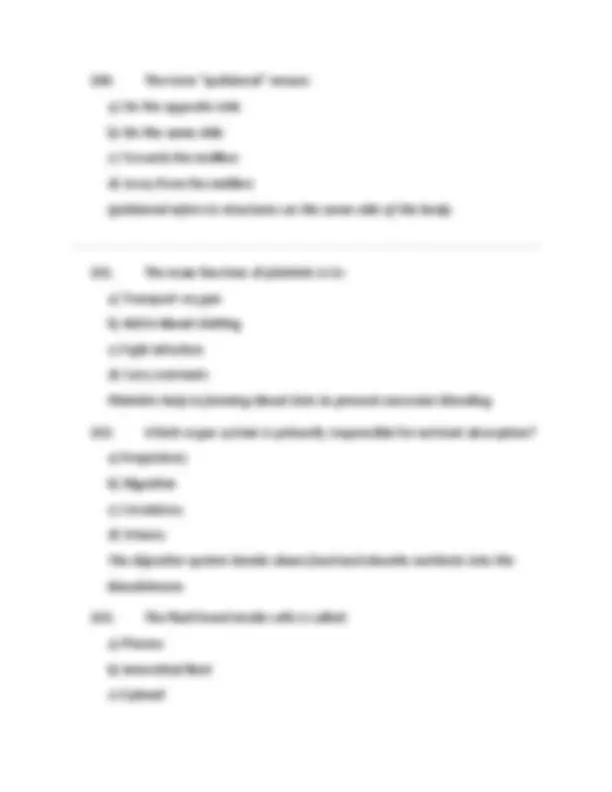
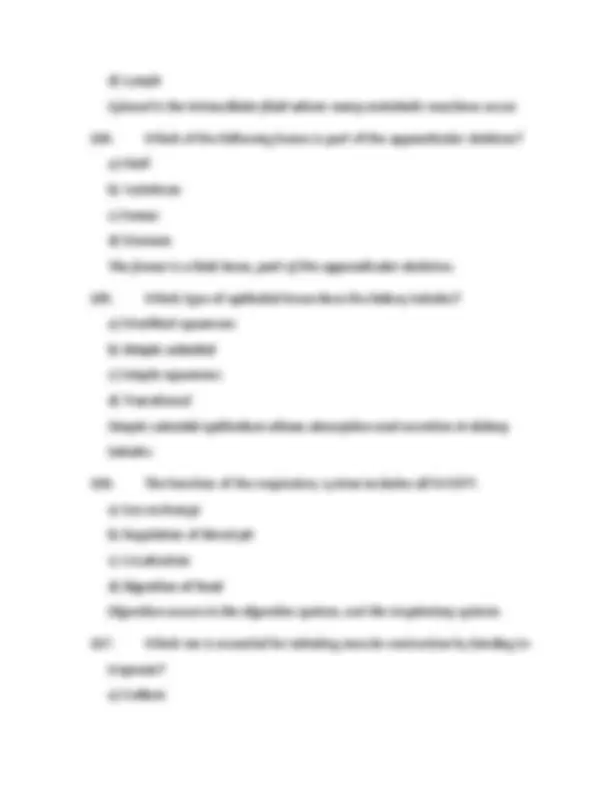
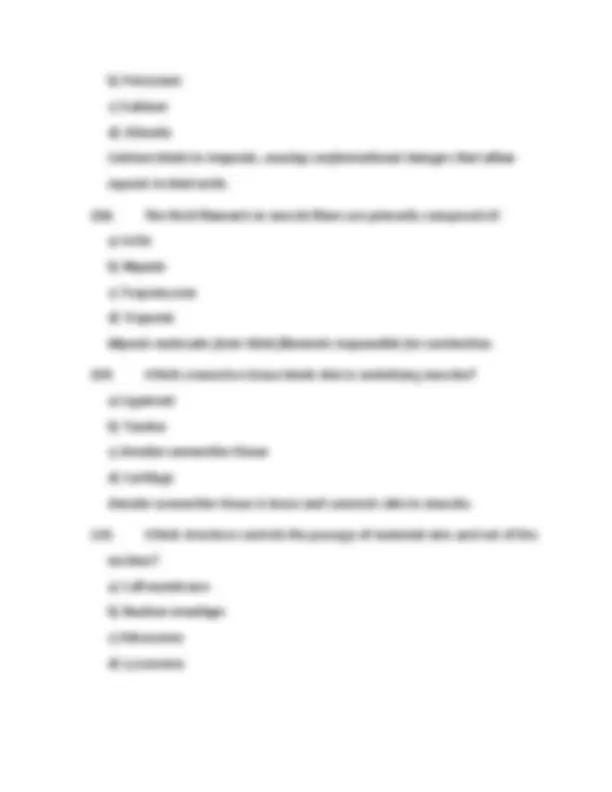
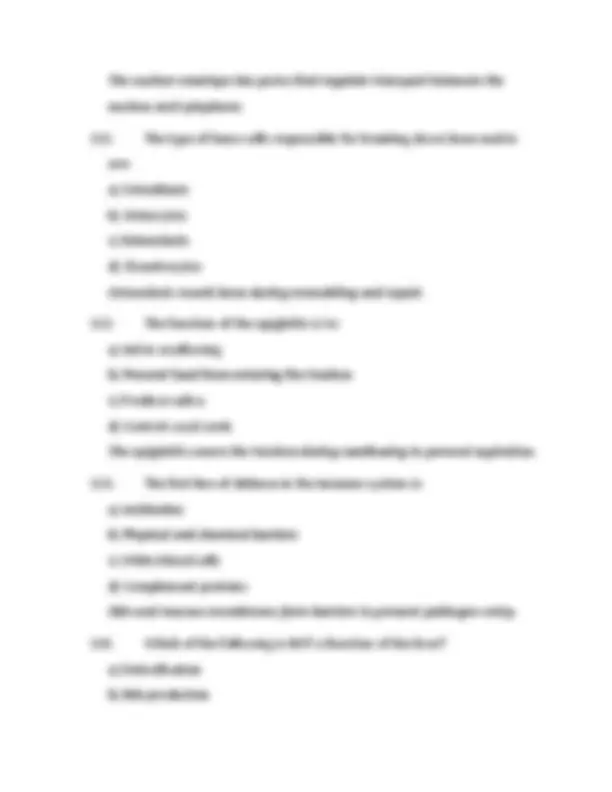
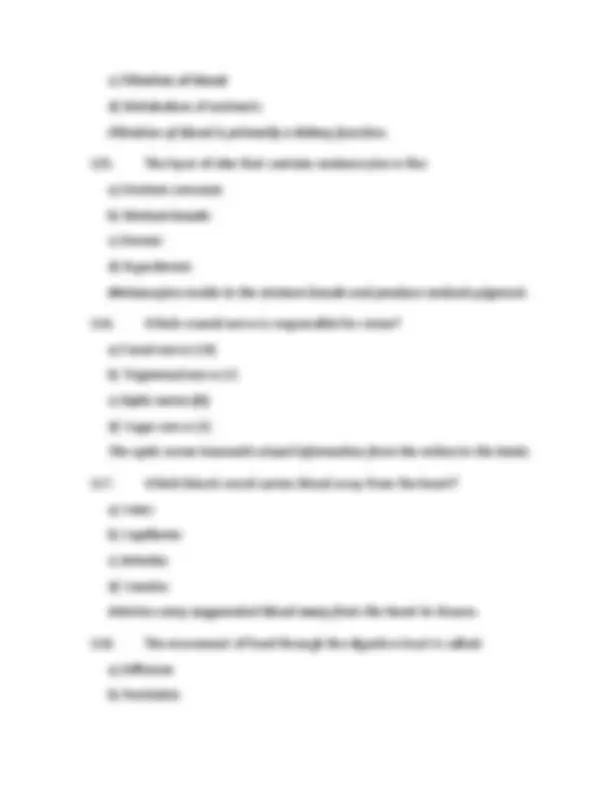
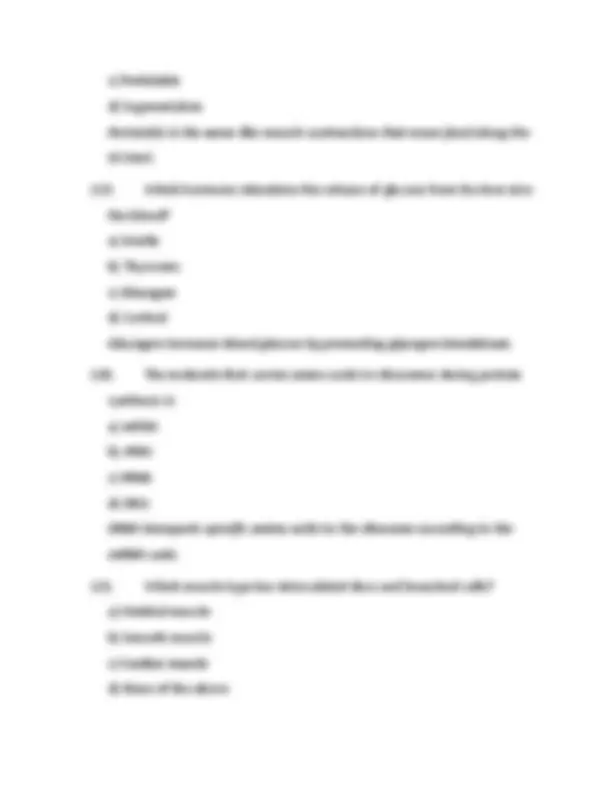
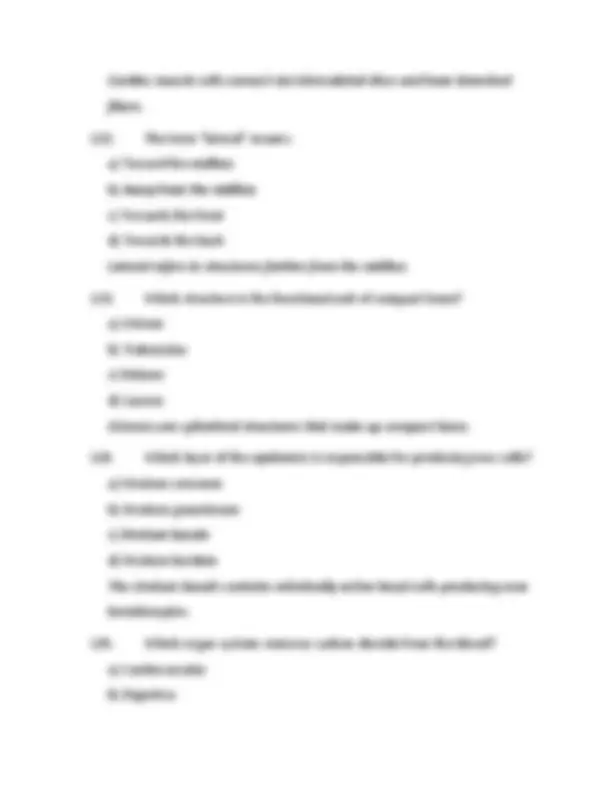
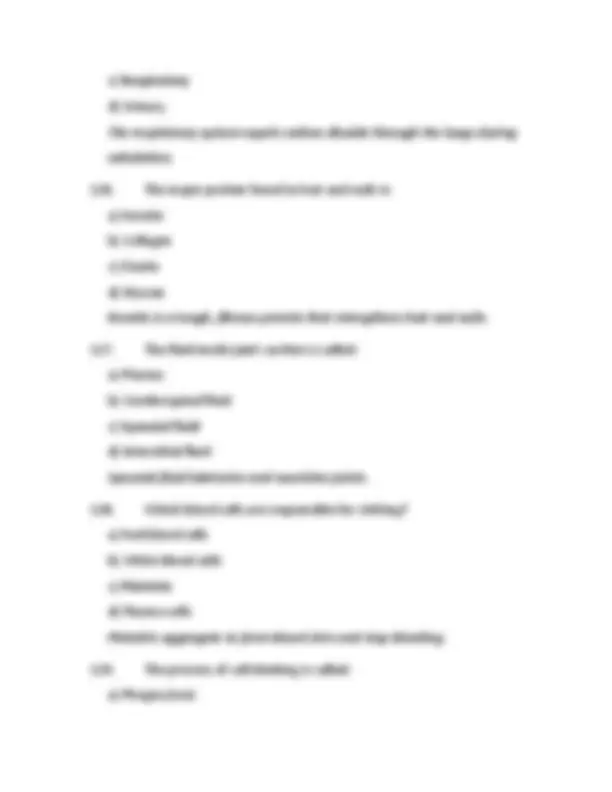
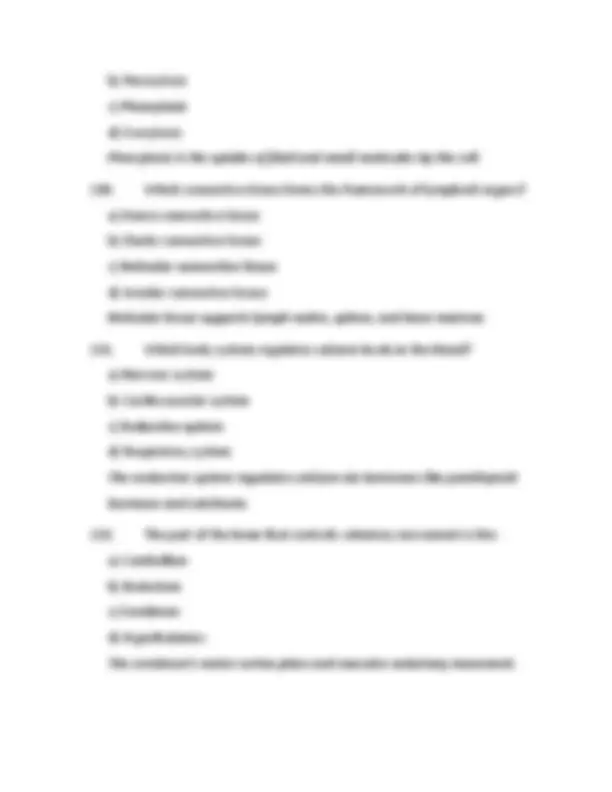
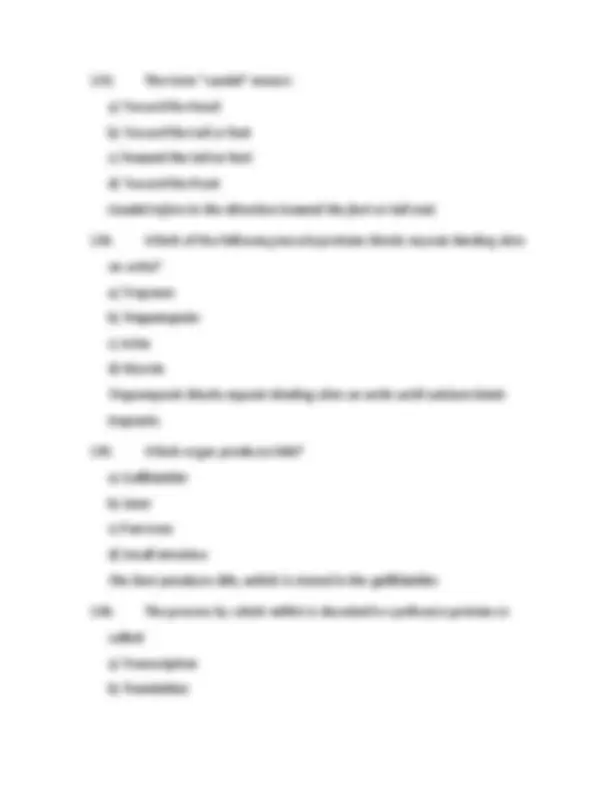
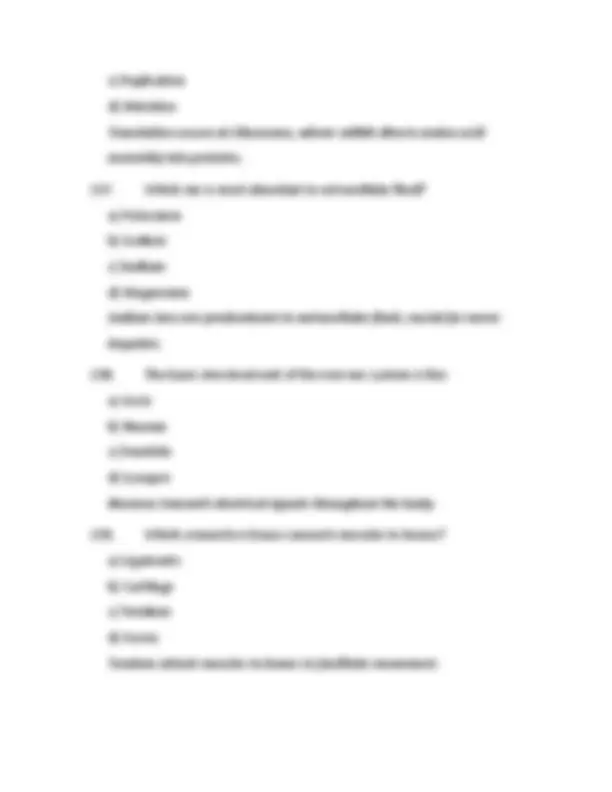
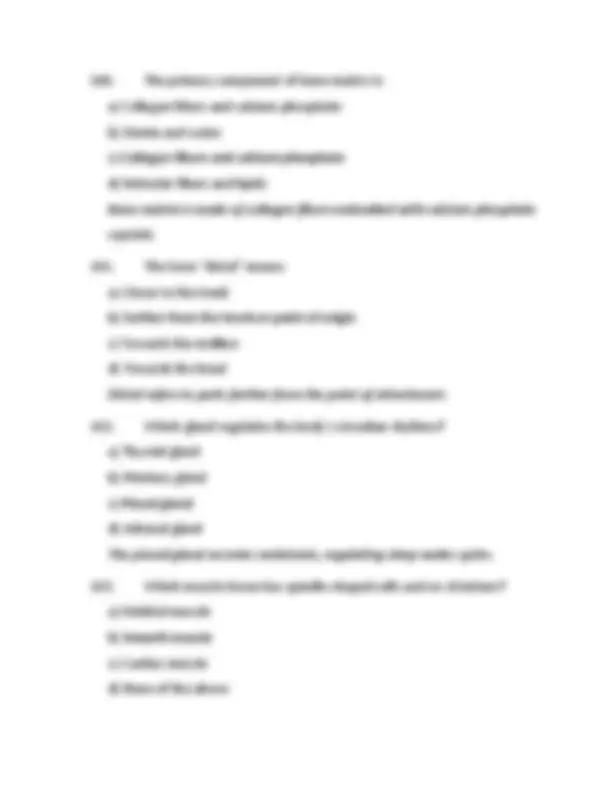
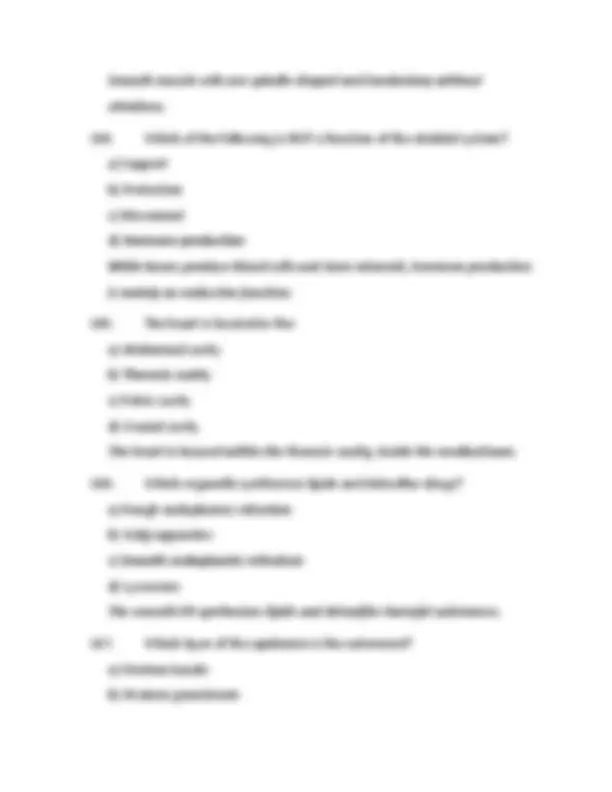
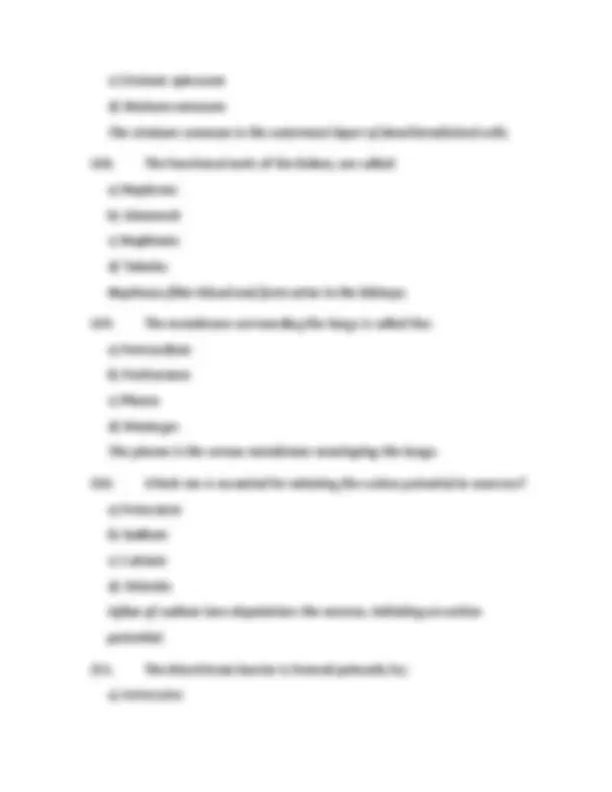
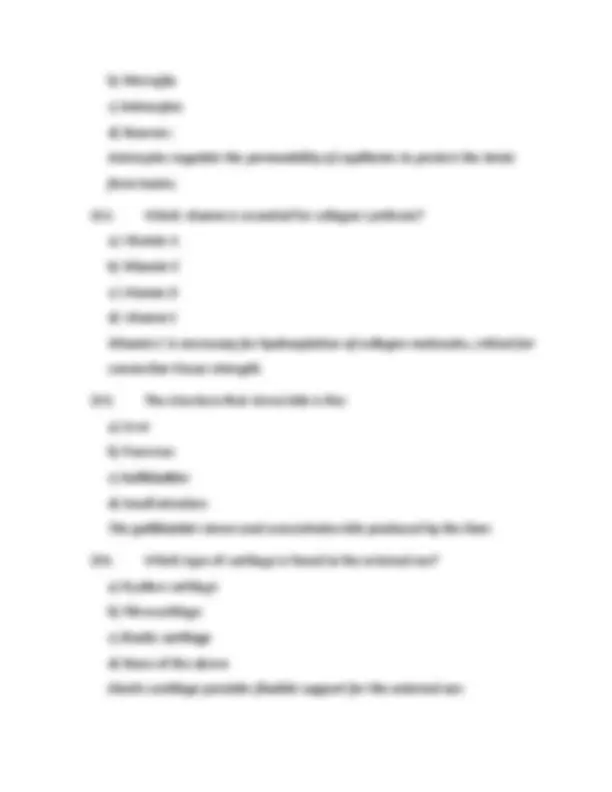
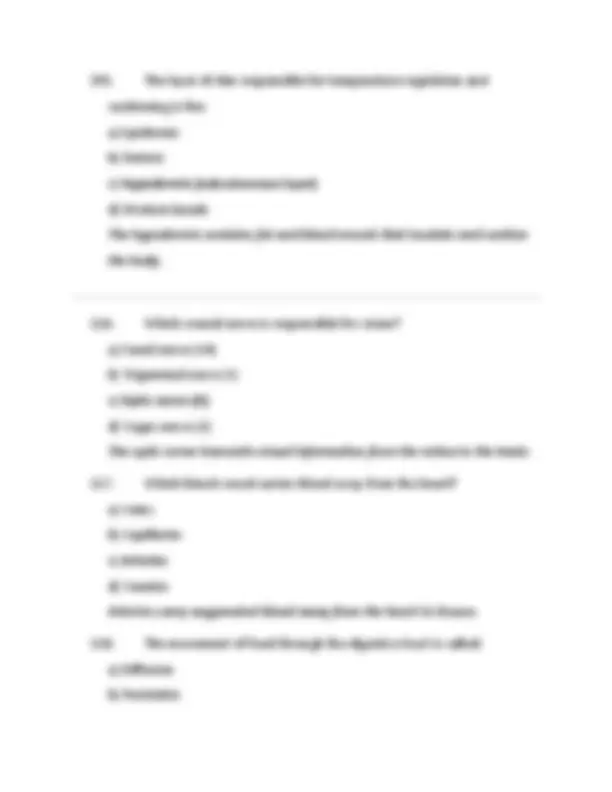
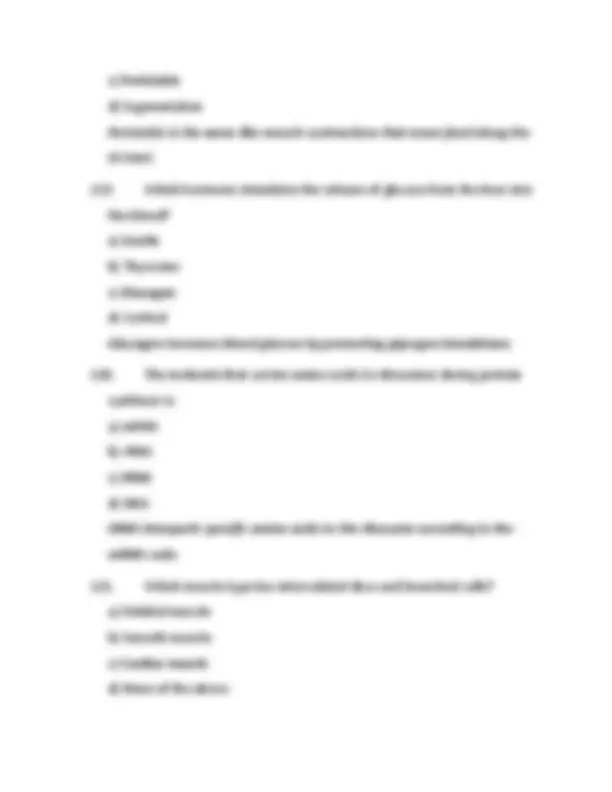
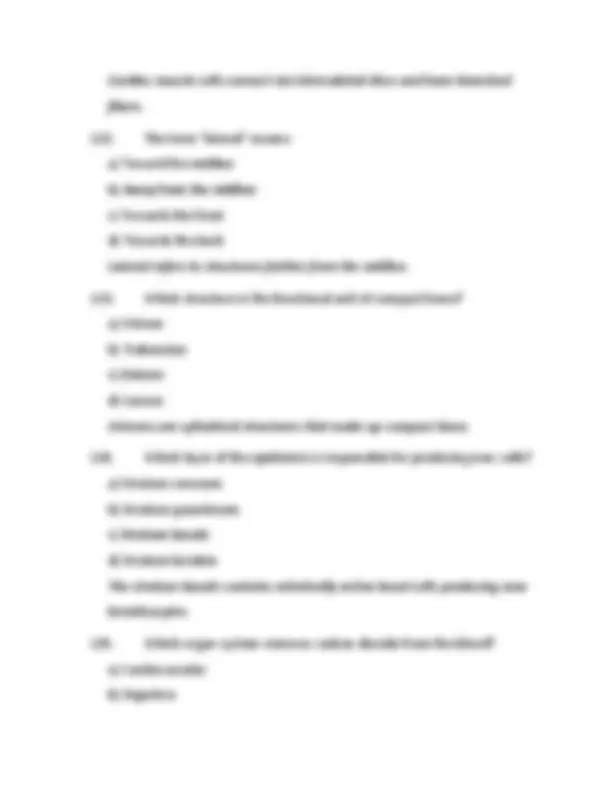
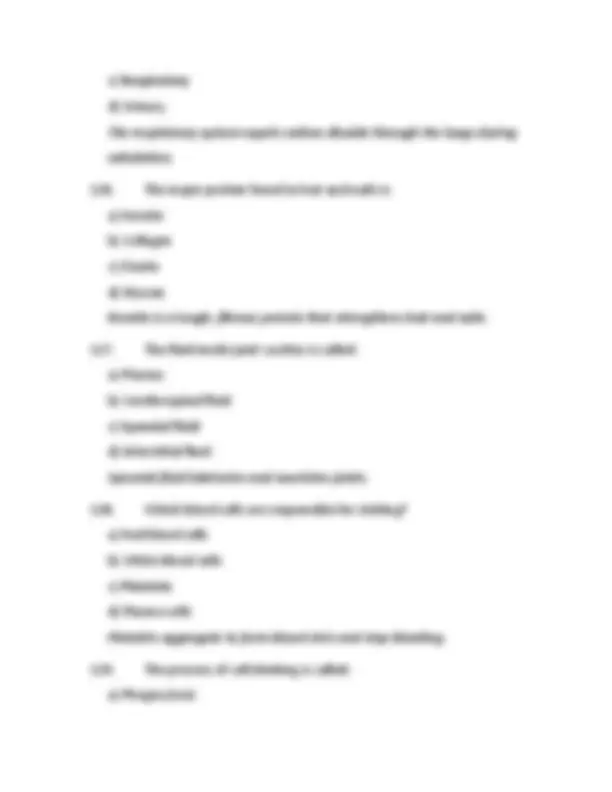
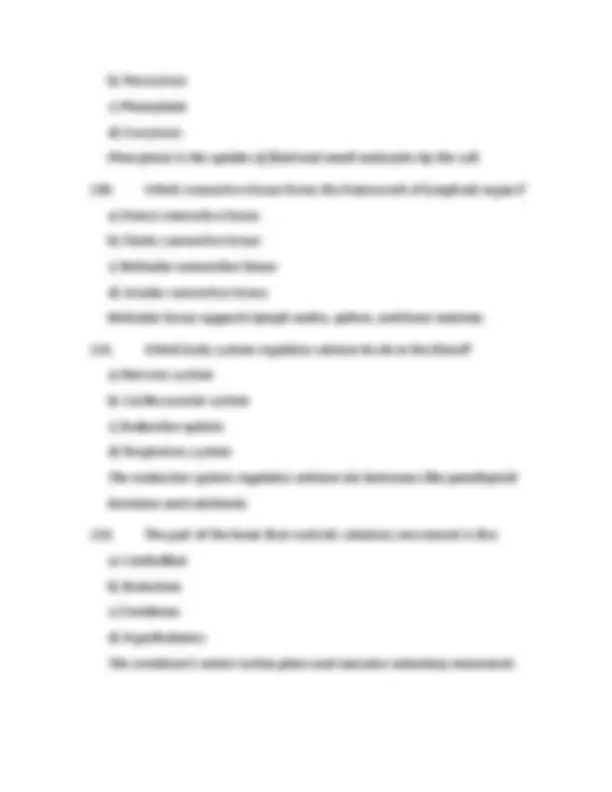
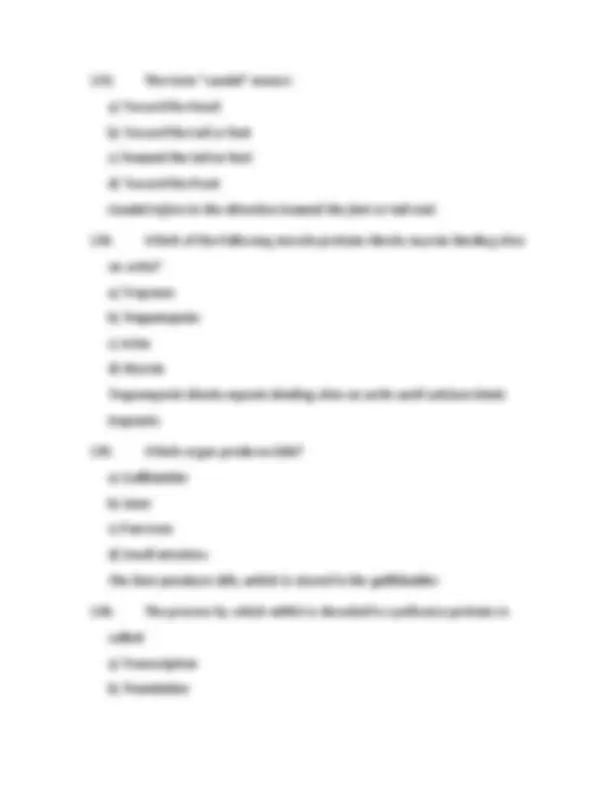

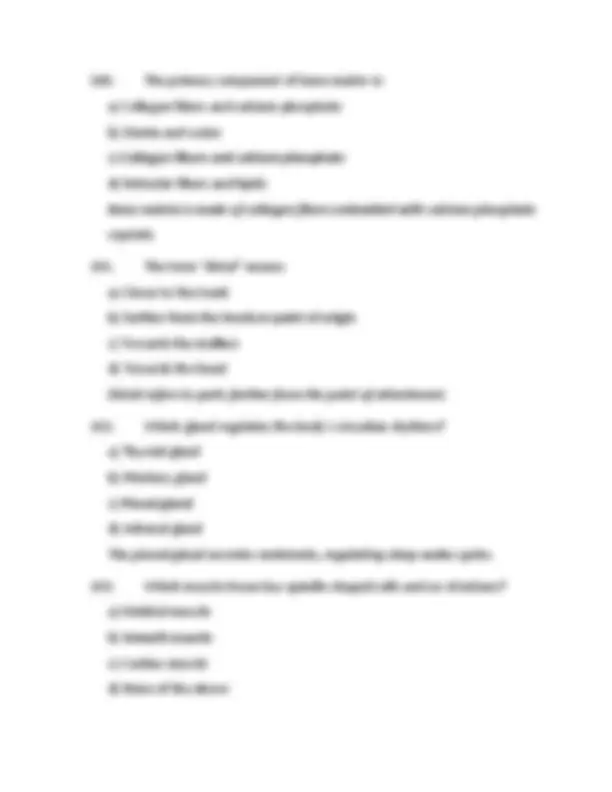
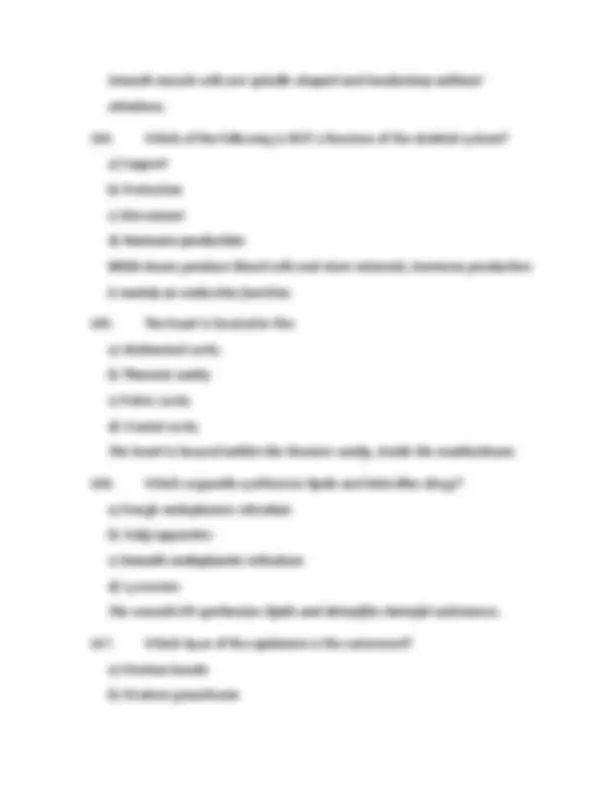
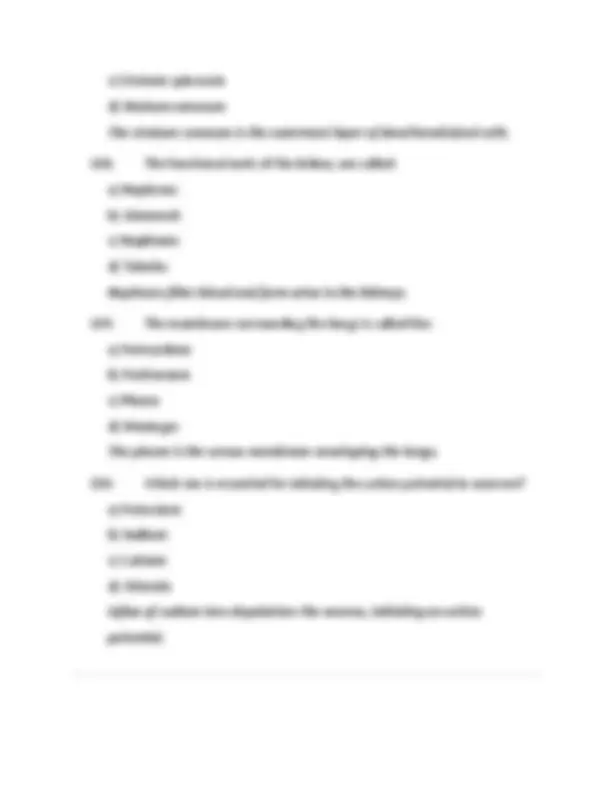
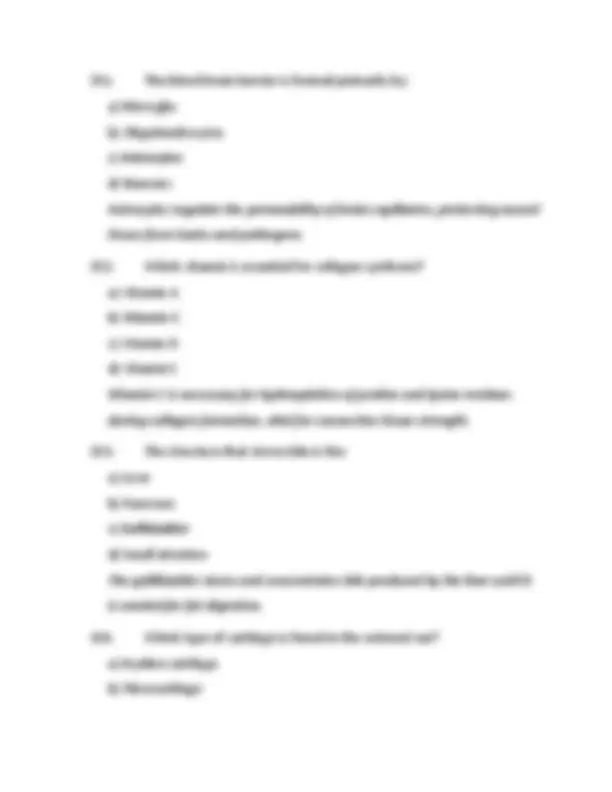
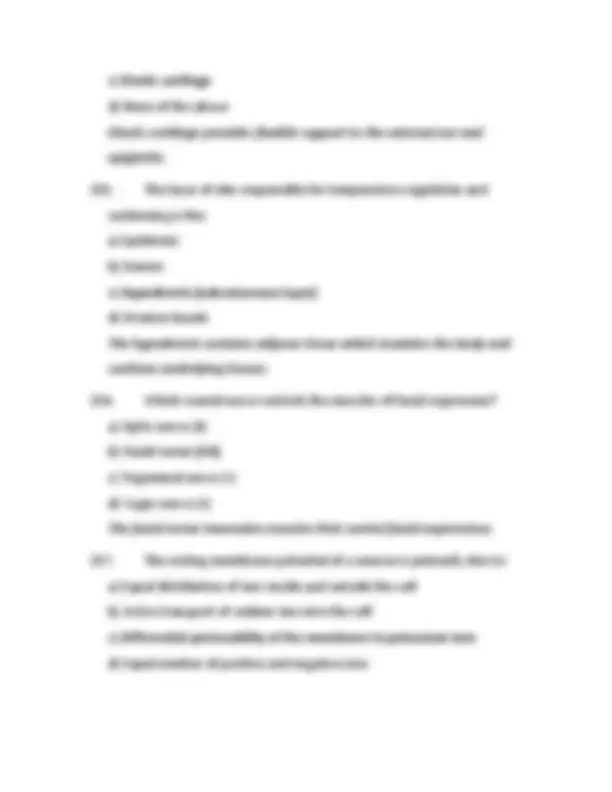
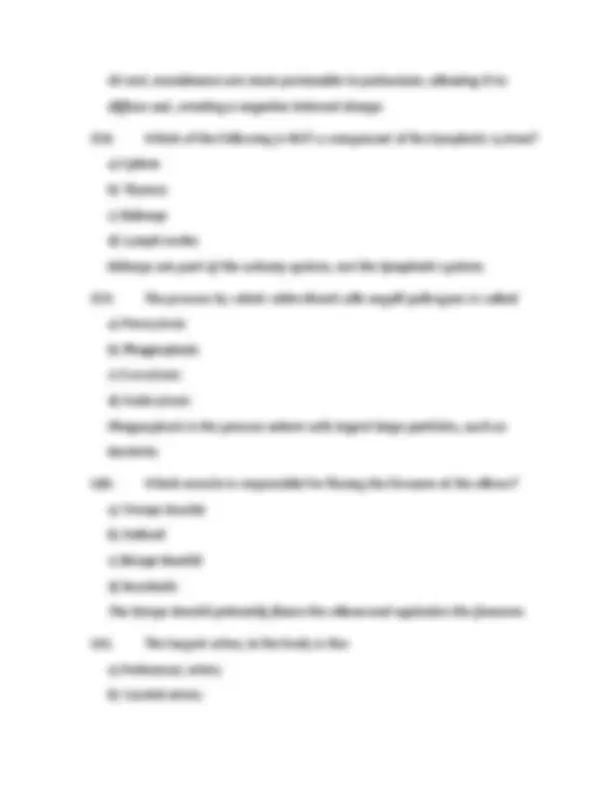
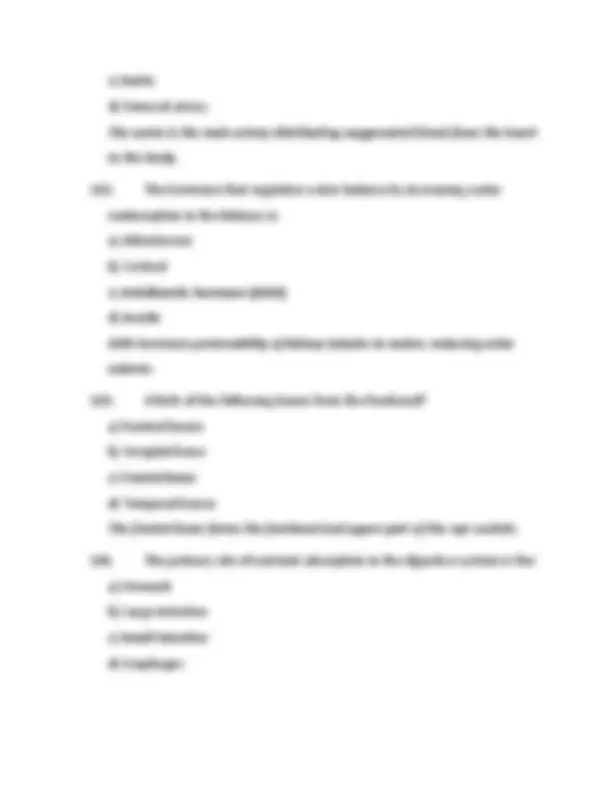
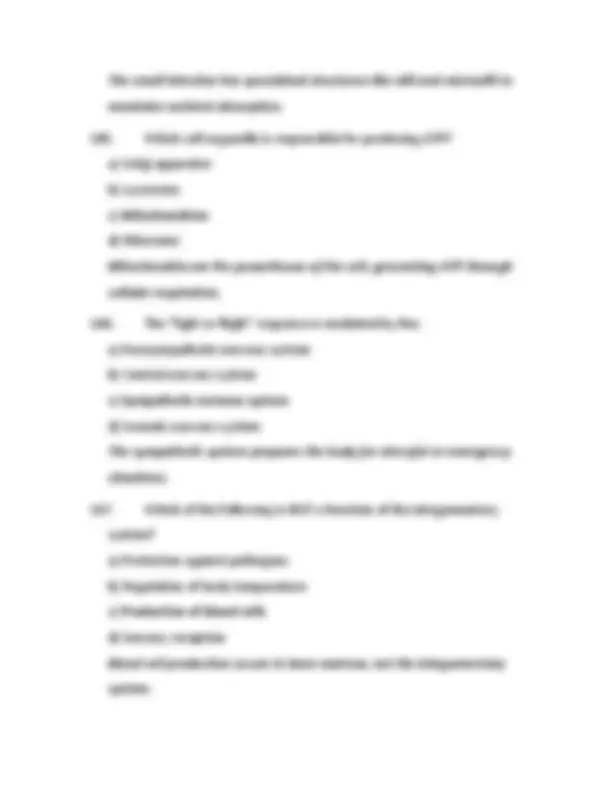
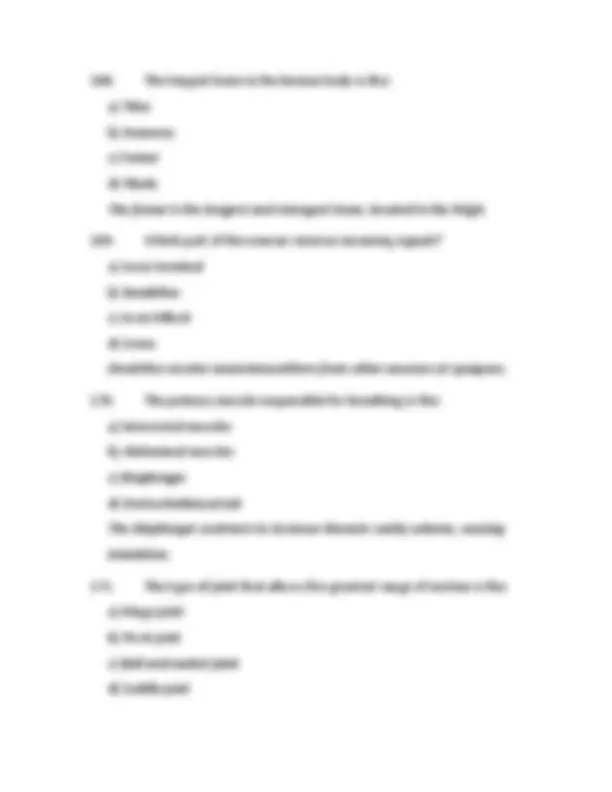
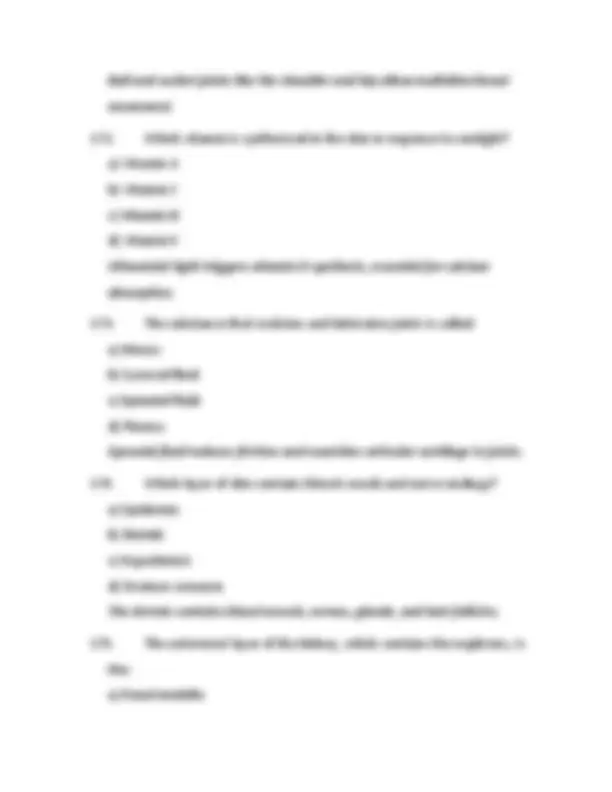
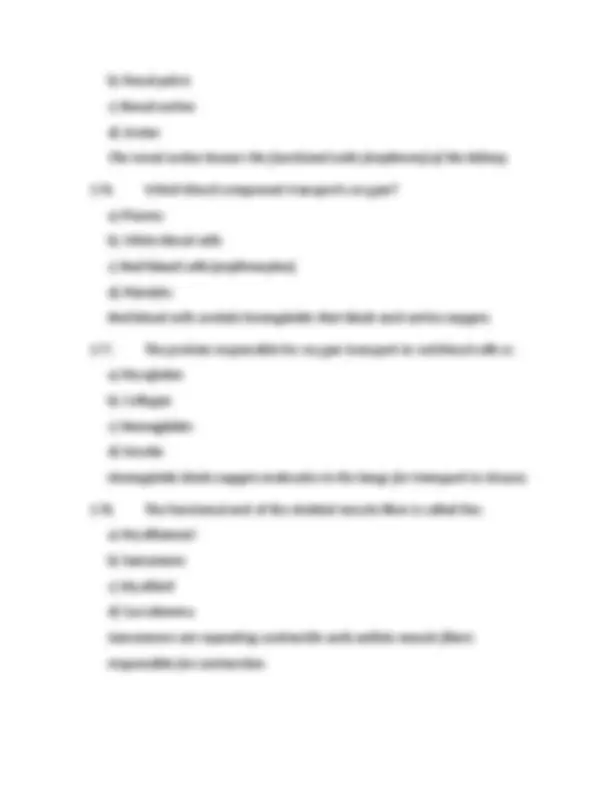
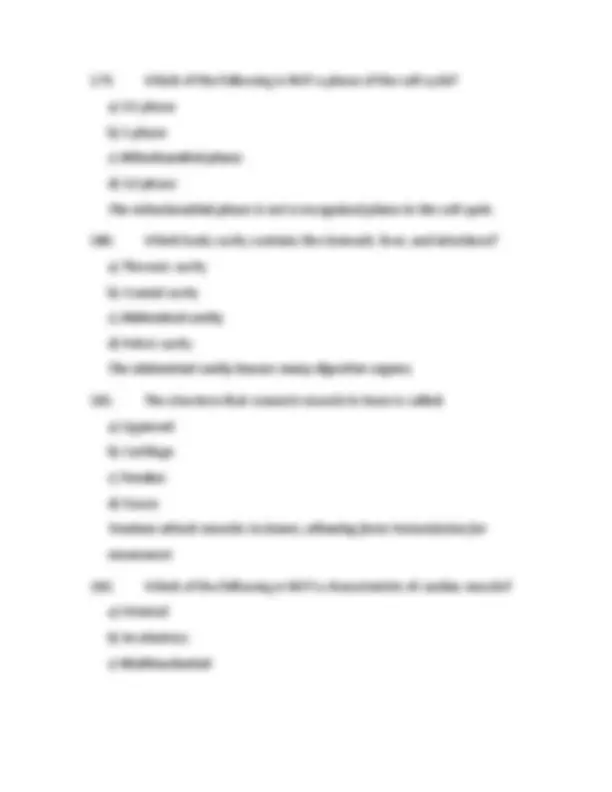
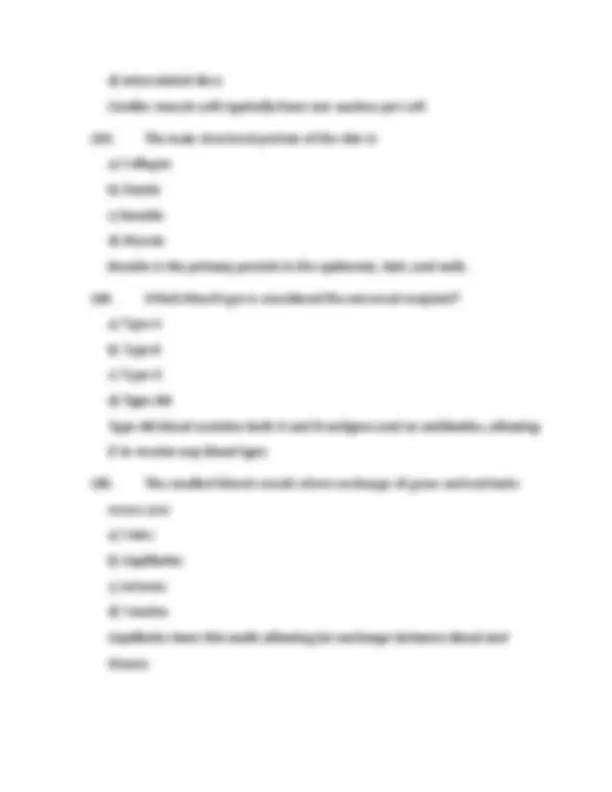
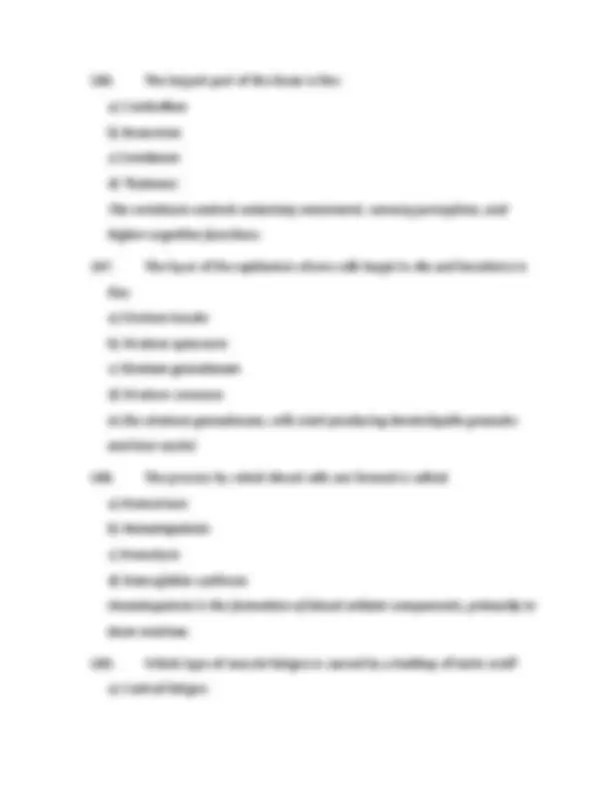
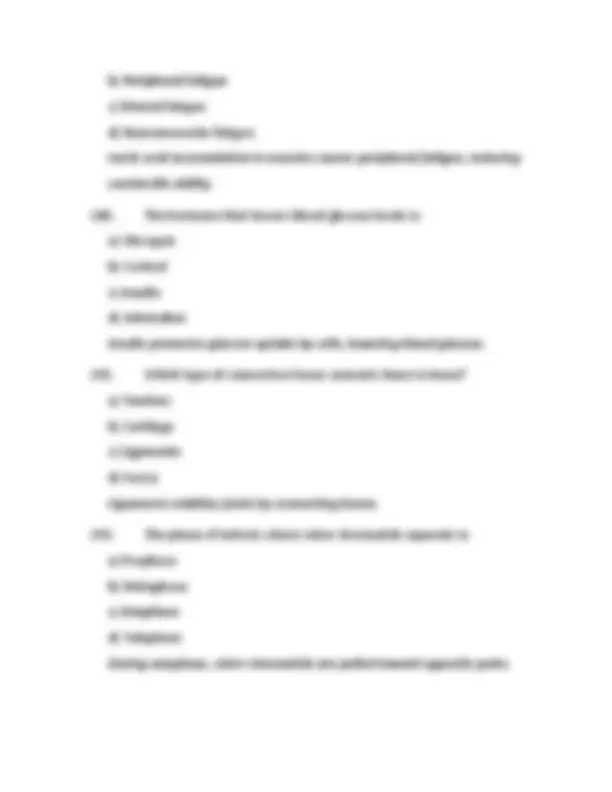
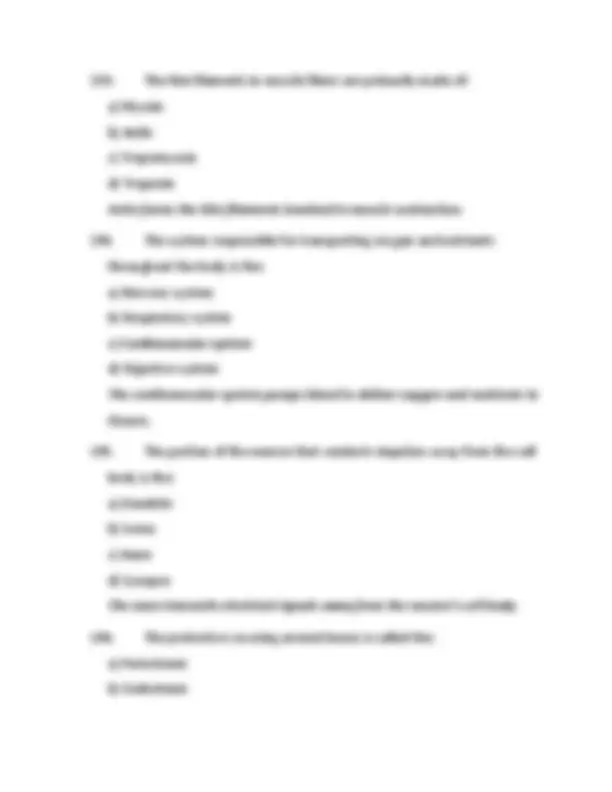
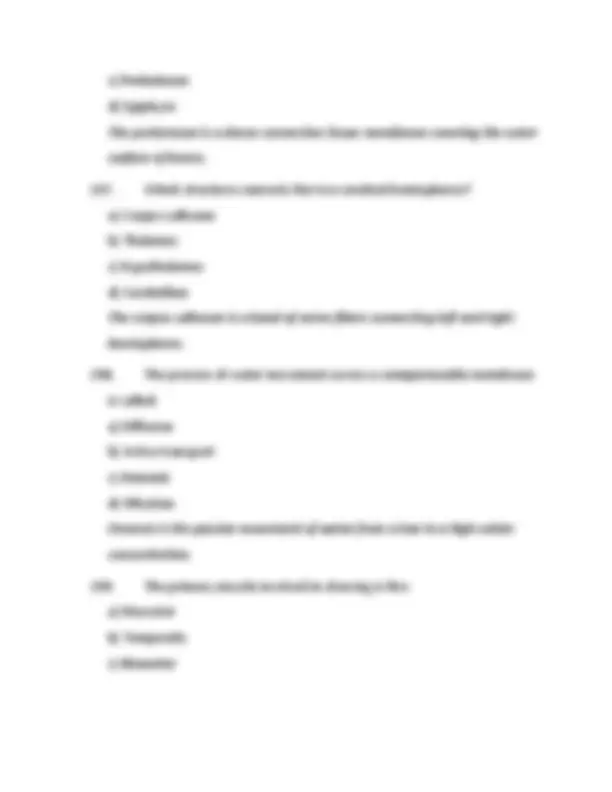
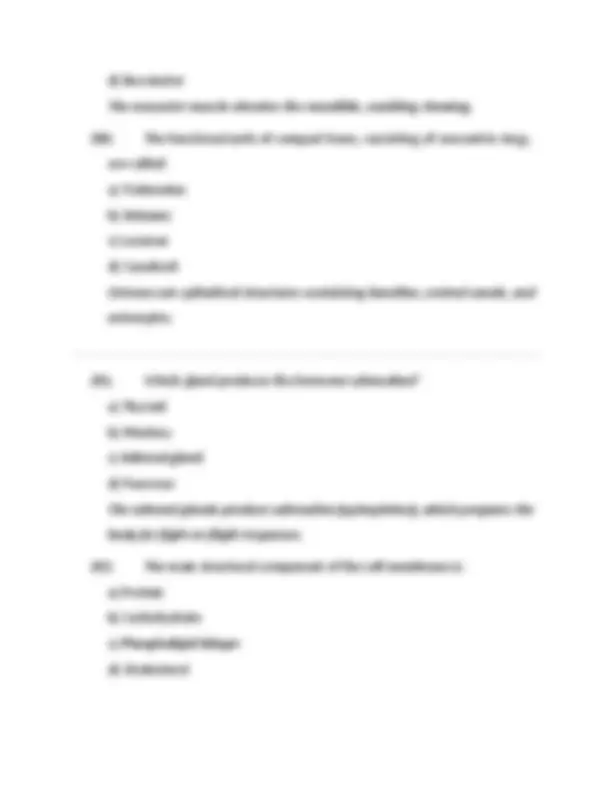
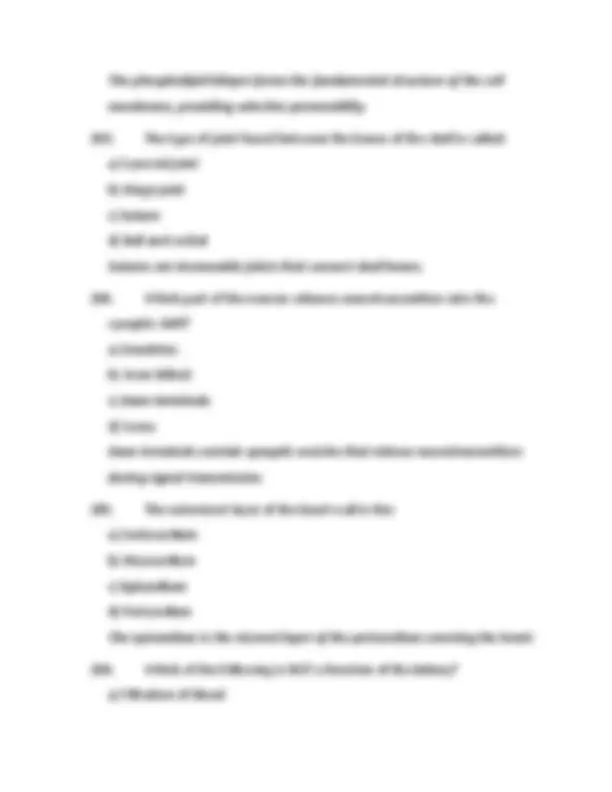
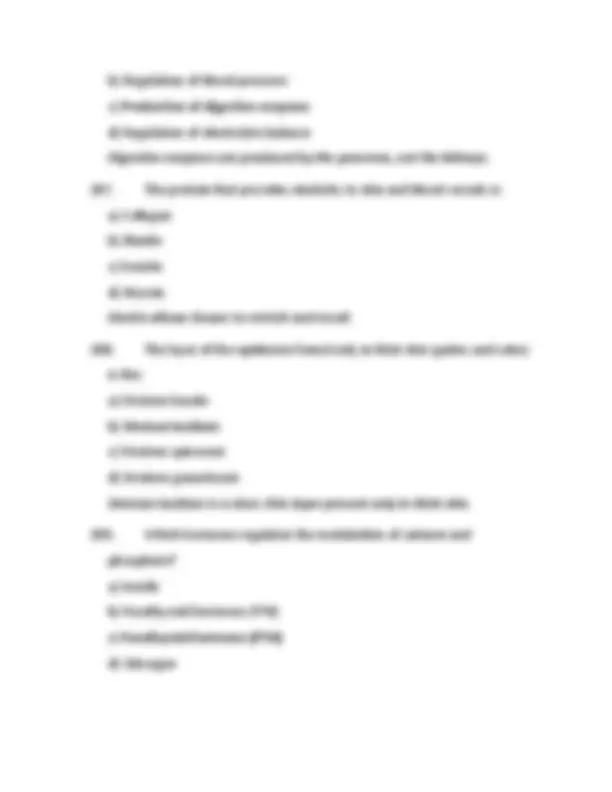
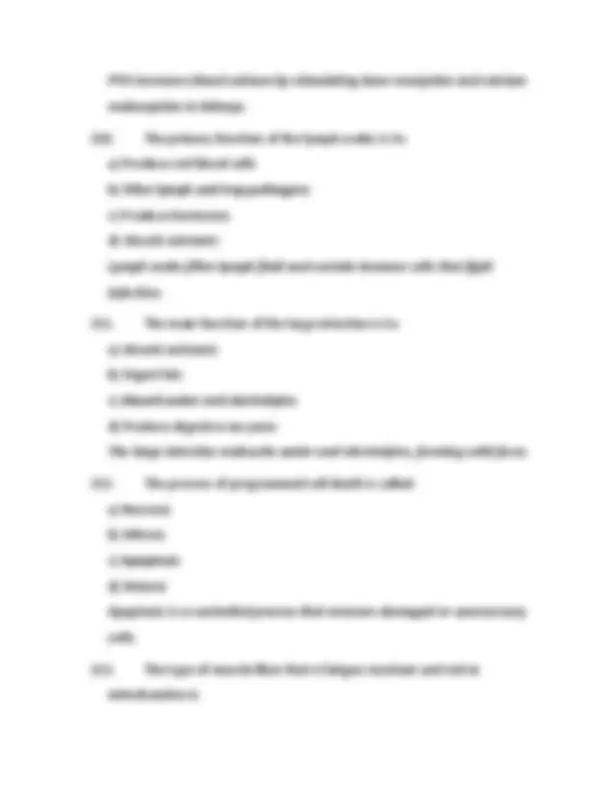
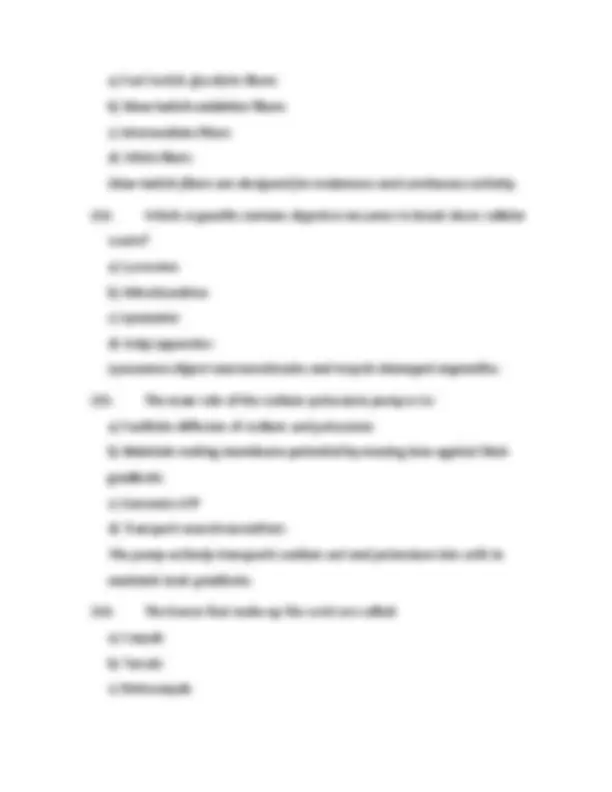
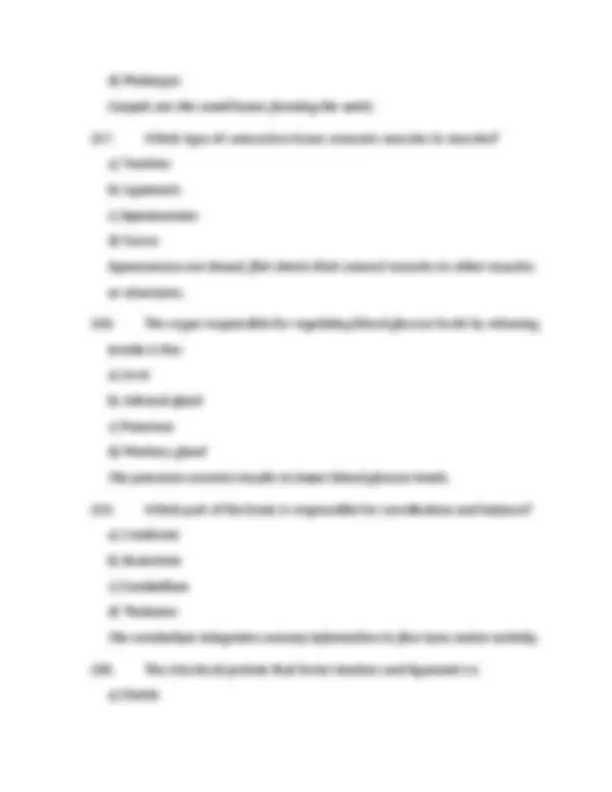
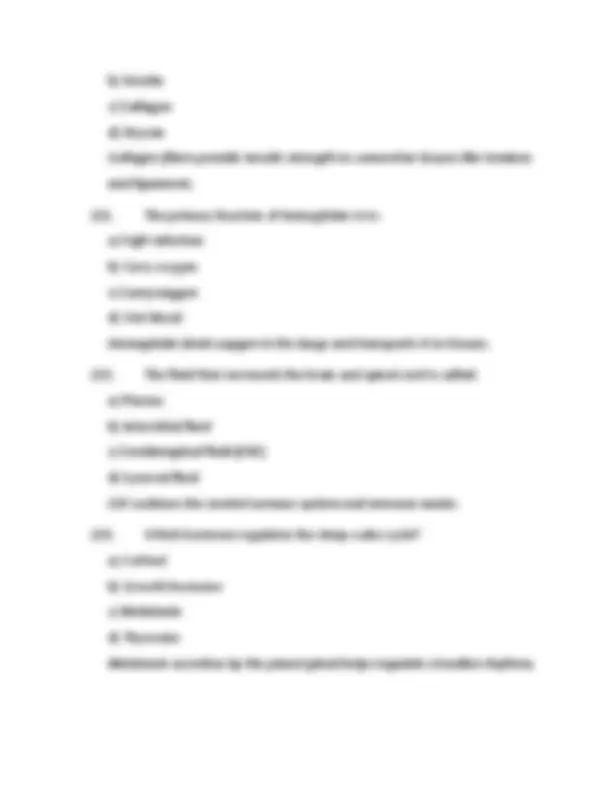
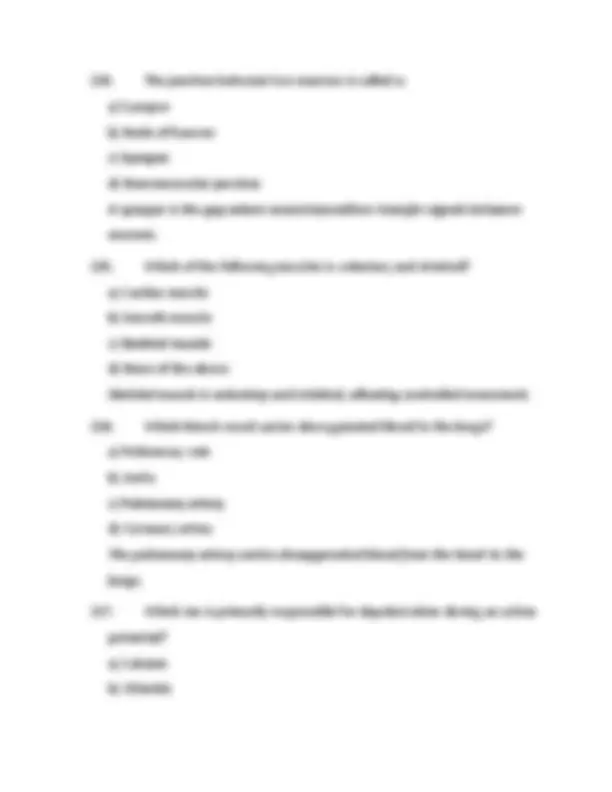
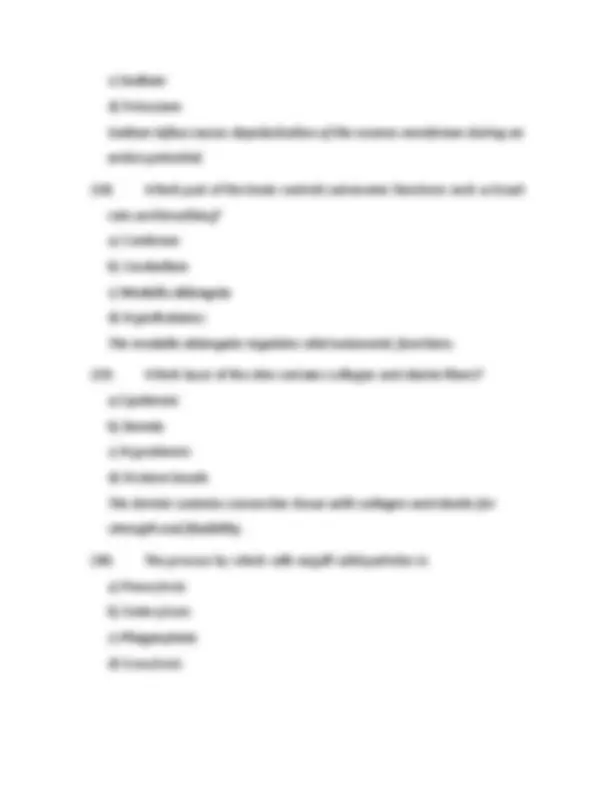
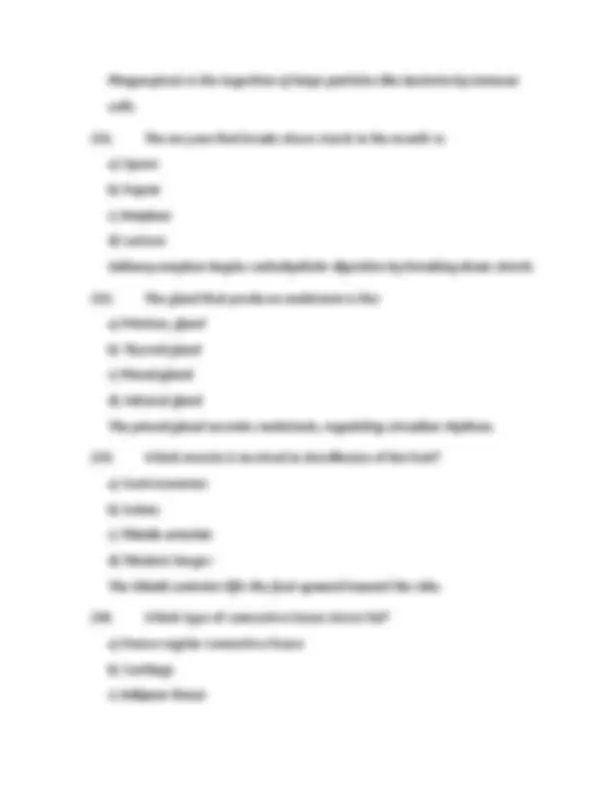
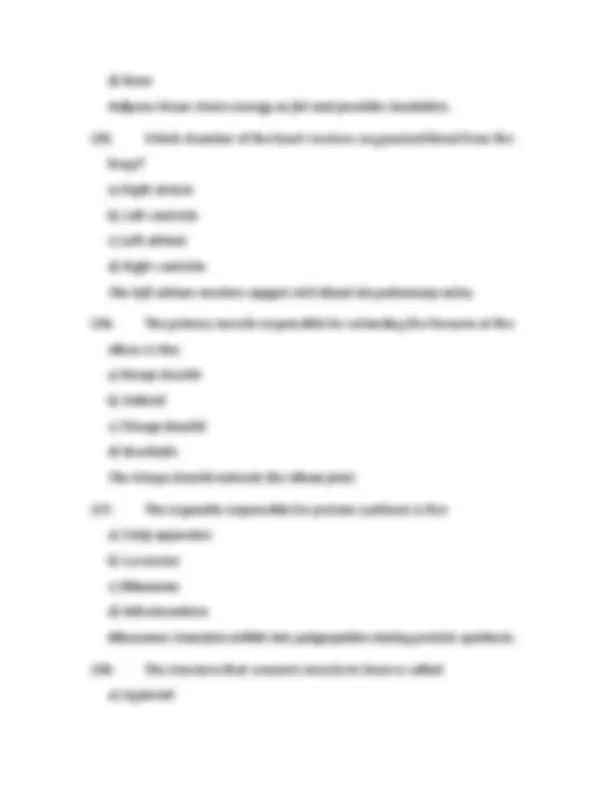
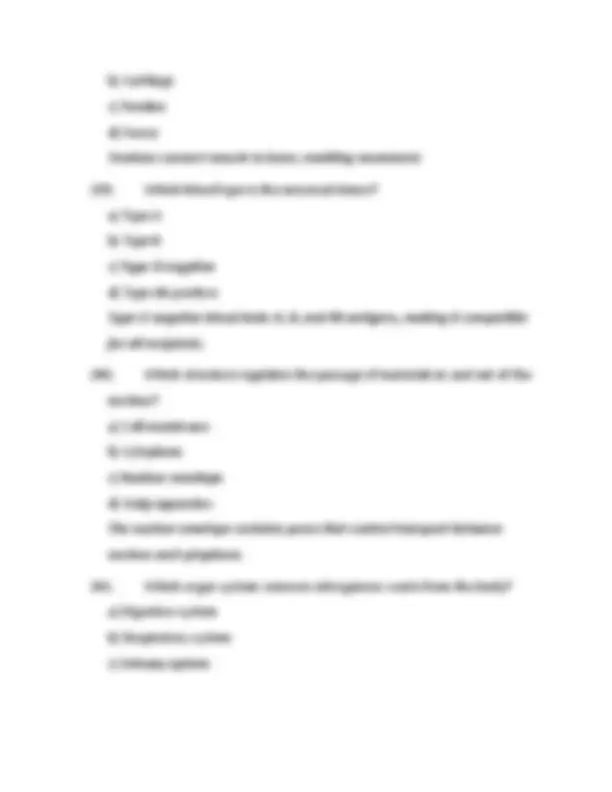
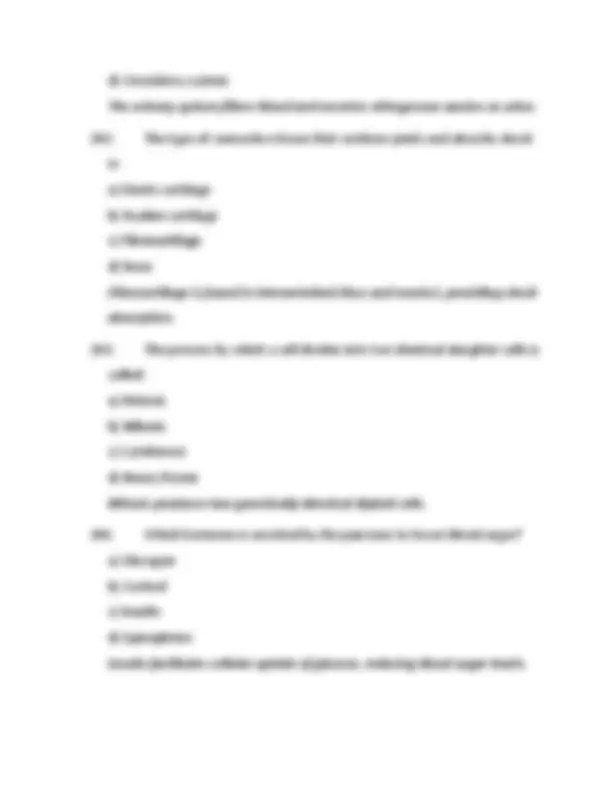
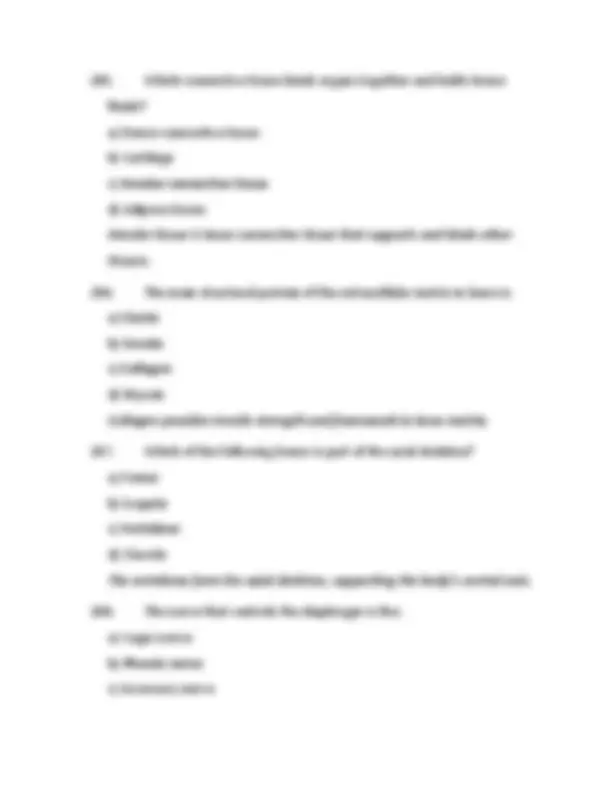
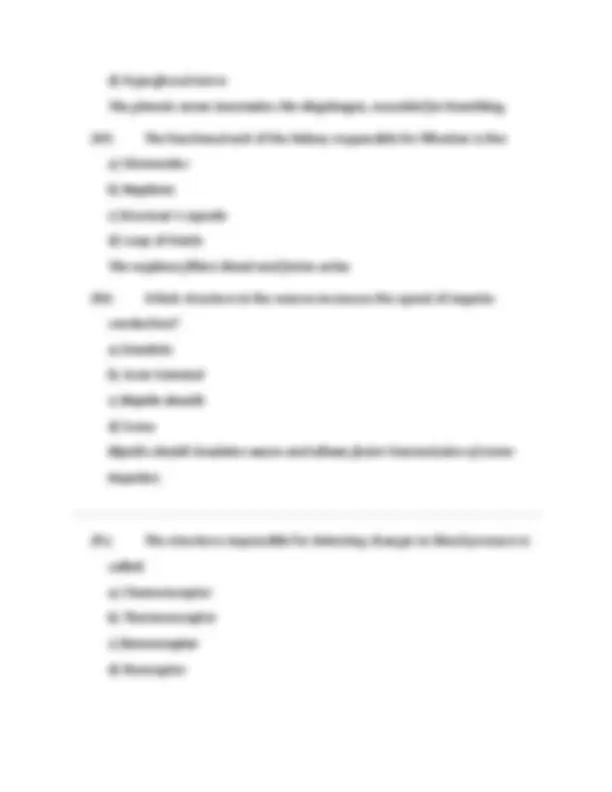
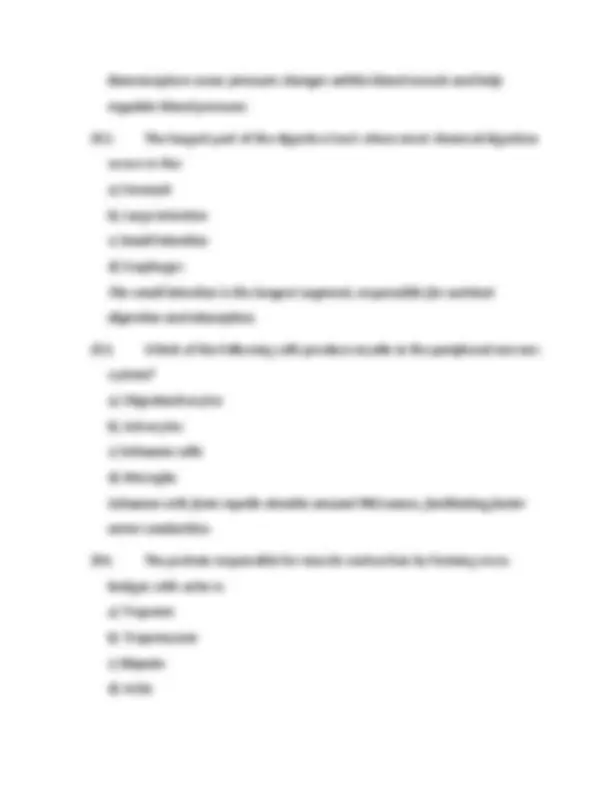
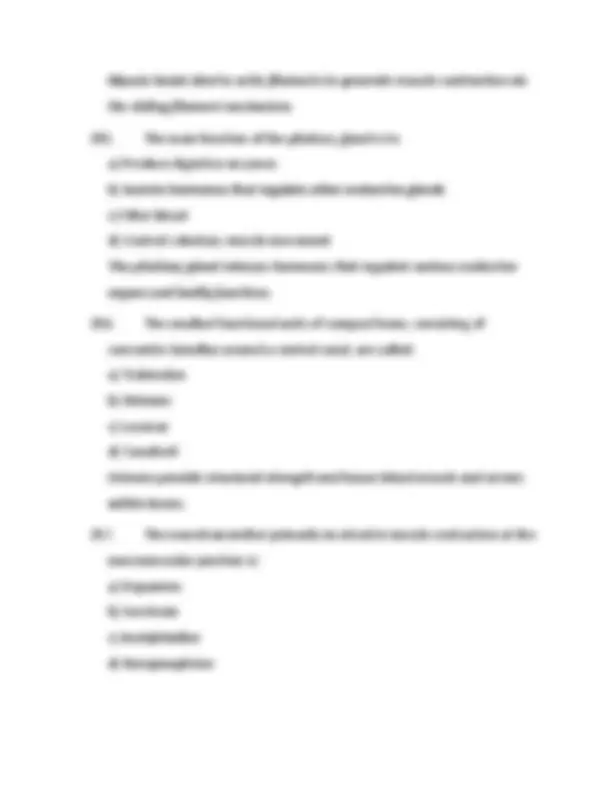
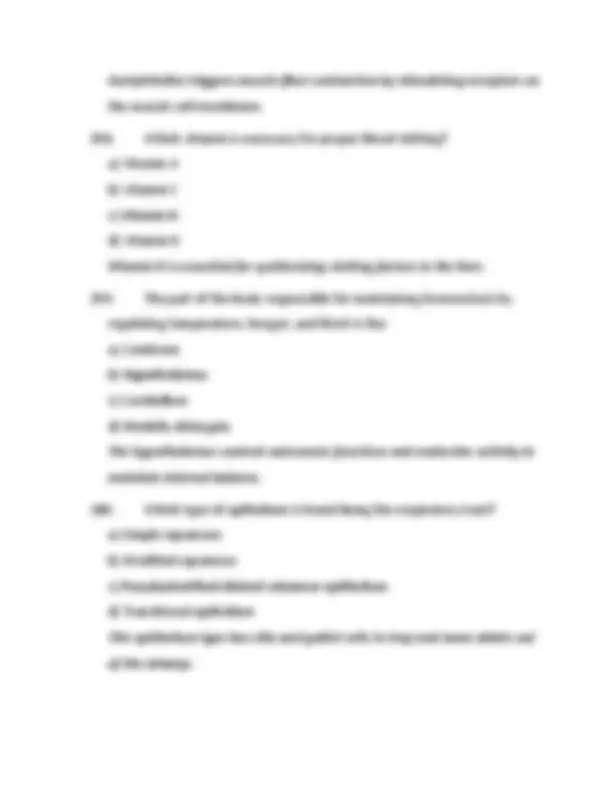
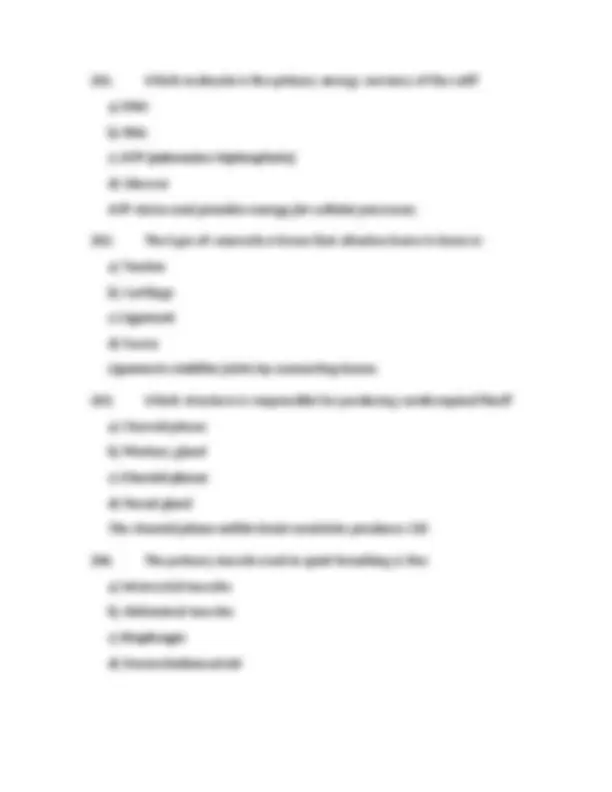
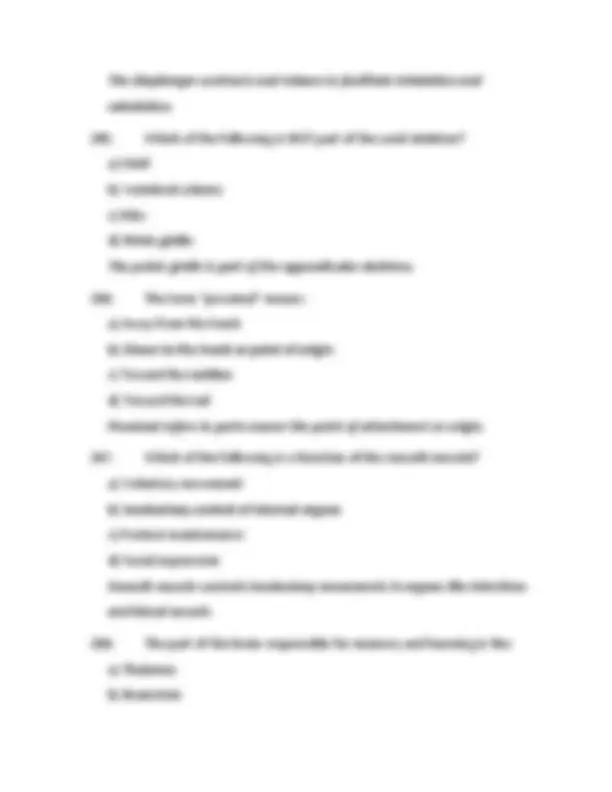
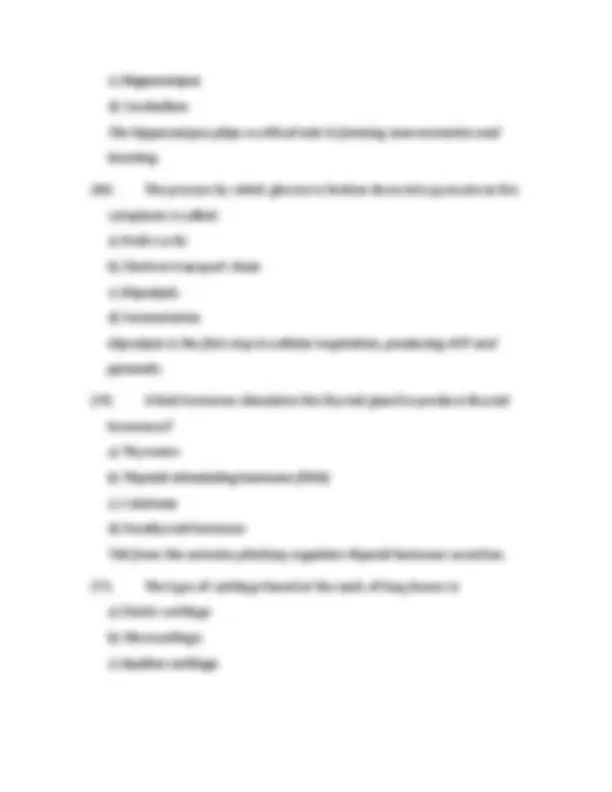
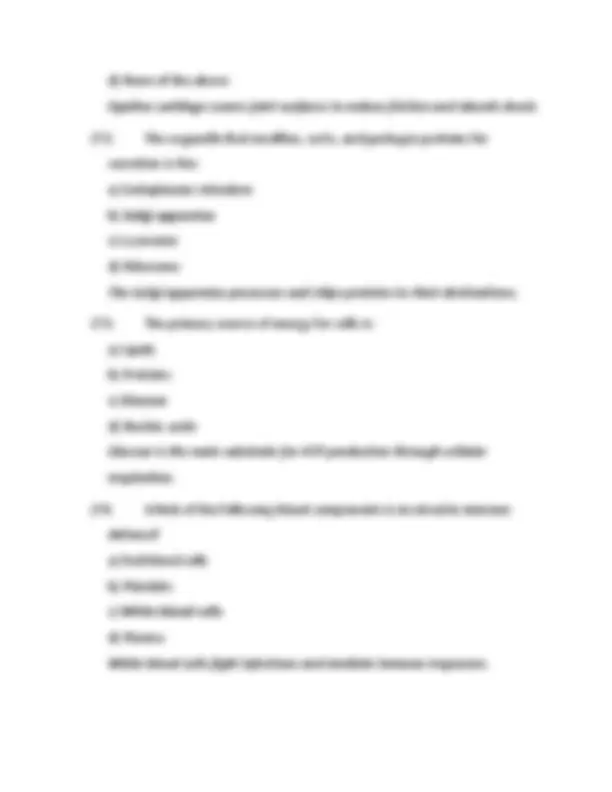
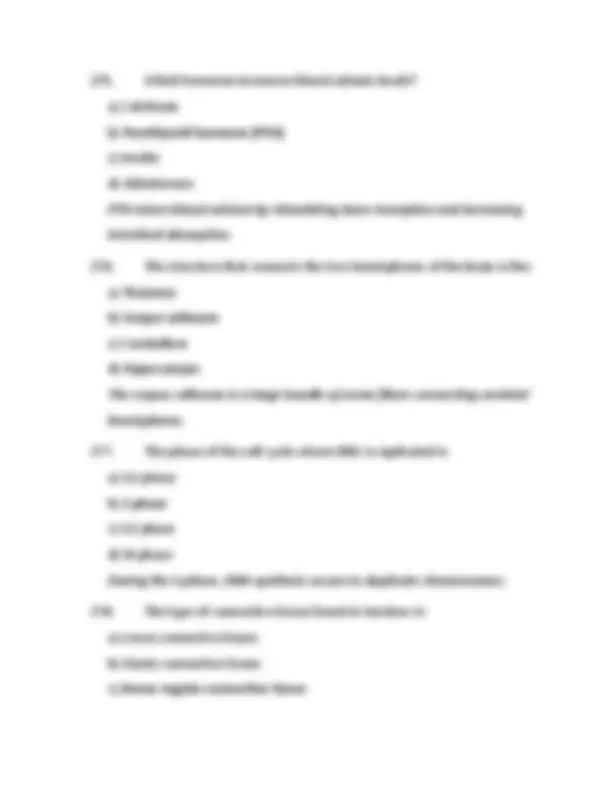
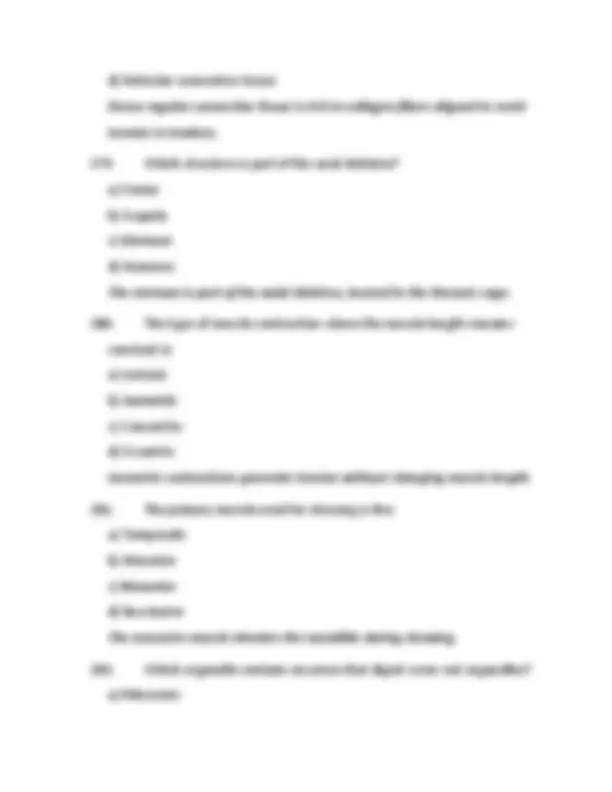
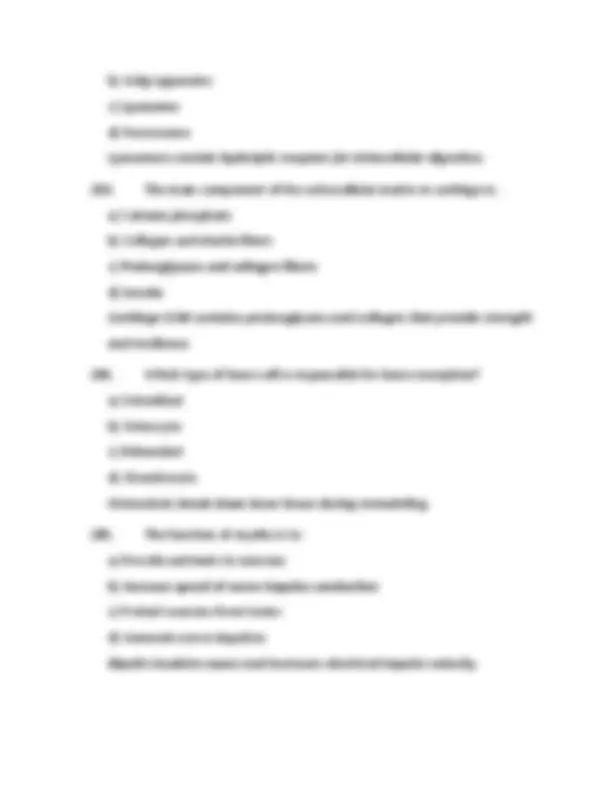
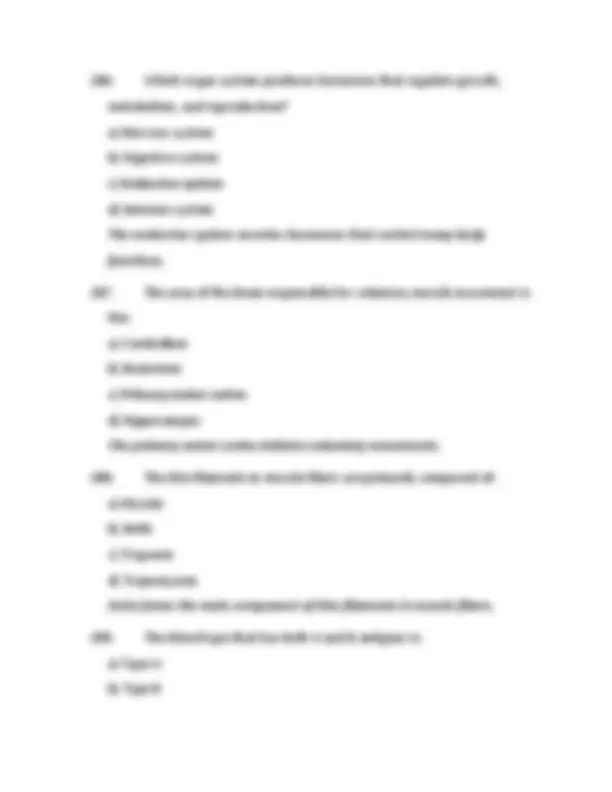
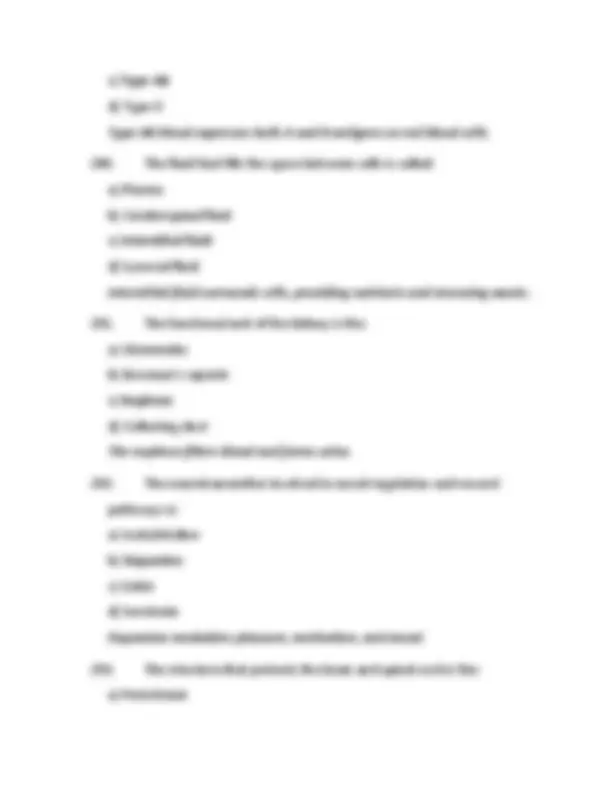
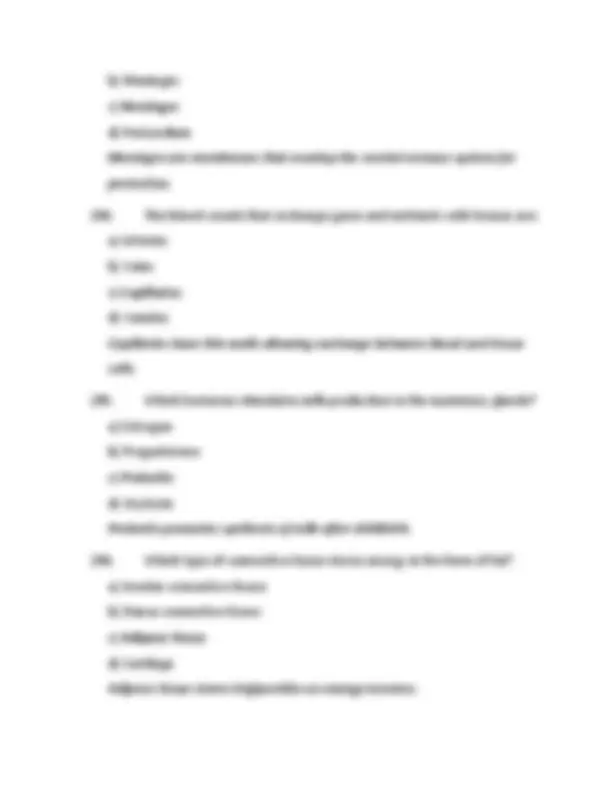
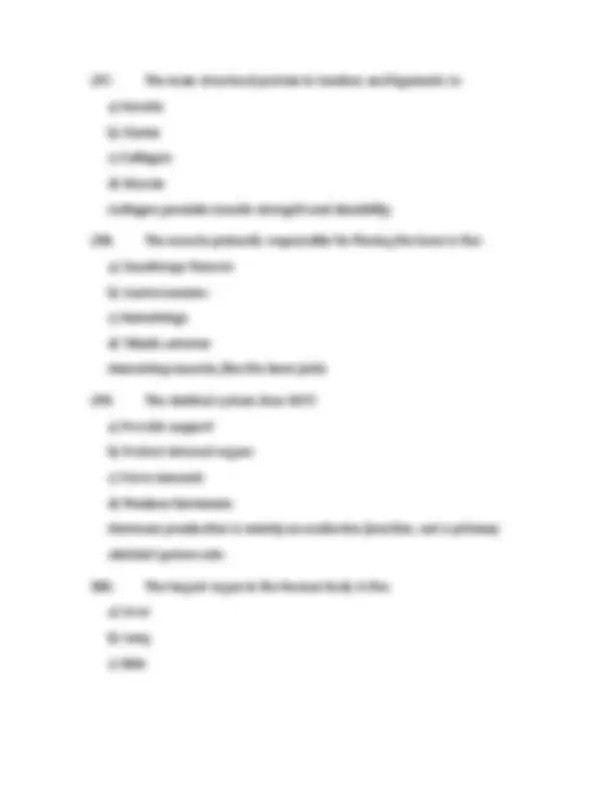
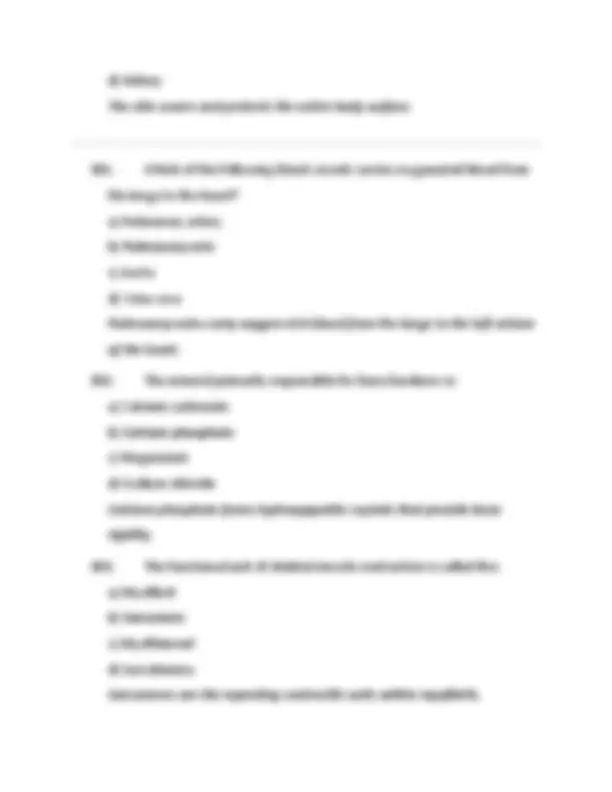
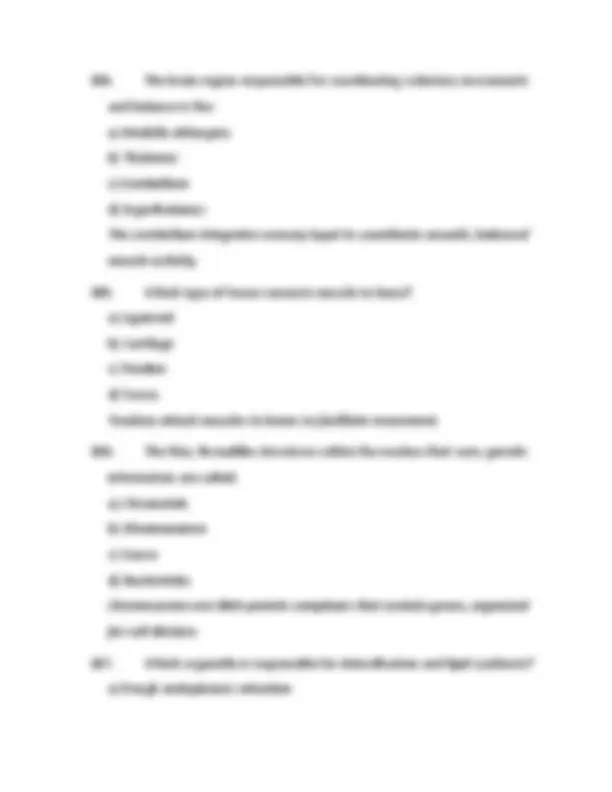
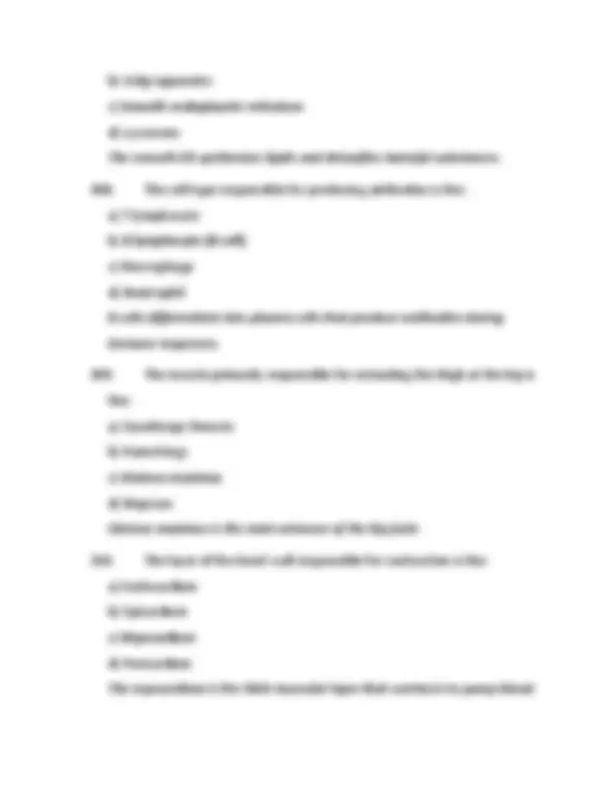
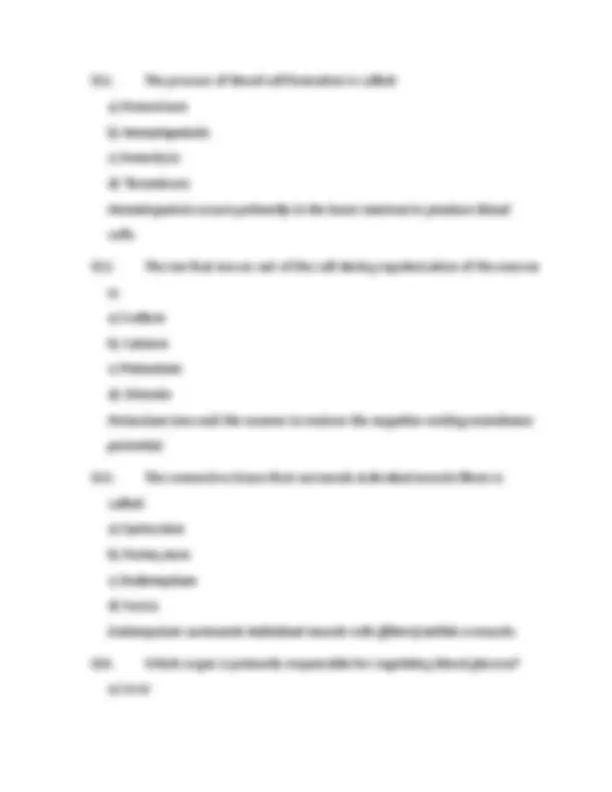


Study with the several resources on Docsity

Earn points by helping other students or get them with a premium plan


Prepare for your exams
Study with the several resources on Docsity

Earn points to download
Earn points by helping other students or get them with a premium plan
Community
Ask the community for help and clear up your study doubts
Discover the best universities in your country according to Docsity users
Free resources
Download our free guides on studying techniques, anxiety management strategies, and thesis advice from Docsity tutors
BIO1100 HUMAN ANATOMY & PHYSIOLOGY I TEST BANK EXAM STUDY GUIDE 750+ QUESTIONS / BIO 1100 HUMAN ANATOMY & PHYSIOLOGY 1 (Latest): Galen College Of Nursing
Typology: Exams
1 / 232

This page cannot be seen from the preview
Don't miss anything!





























































































d) Ribosome Mitochondria are known as the “powerhouses” of the cell because they generate ATP through cellular respiration.
10.Which body plane divides the body into left and right halves? a) Coronal b) Transverse c) Sagittal d) Frontal The sagittal plane divides the body into left and right parts. 11.The function of hemoglobin is to: a) Fight infection b) Transport oxygen c) Clot blood d) Store iron Hemoglobin in red blood cells binds and carries oxygen to tissues. 12.Which layer of the skin contains collagen and elastic fibers? a) Epidermis b) Dermis c) Hypodermis d) Stratum corneum The dermis is a connective tissue layer with collagen and elastin providing strength and elasticity. 13.The main function of white blood cells is: a) Carry oxygen b) Clot blood c) Defend against infection d) Carry nutrients
White blood cells are part of the immune system and protect the body from pathogens. 14.The primary function of the lymphatic system is to: a) Transport oxygen b) Return interstitial fluid to the bloodstream c) Digest fats d) Produce hormones The lymphatic system collects excess tissue fluid and returns it to the circulatory system. 15.Which of the following is NOT a characteristic of cardiac muscle? a) Striated b) Involuntary c) Multinucleated d) Branched Cardiac muscle cells typically have a single nucleus, unlike skeletal muscle which is multinucleated. 16.The largest organ in the human body is the: a) Heart b) Liver c) Skin d) Lungs Skin is the largest organ by surface area and weight. 17.The term “homeostasis” refers to: a) Cell division
The thyroid gland produces hormones that regulate metabolism, growth, and development. 21.The term “proximal” means: a) Far from the origin b) Close to the origin c) Towards the front d) Towards the back Proximal means closer to the point of attachment or origin. 22.Which organelle is responsible for packaging and modifying proteins? a) Ribosome b) Golgi apparatus c) Lysosome d) Nucleus The Golgi apparatus processes and packages proteins for transport inside or outside the cell. 23.The nervous system is divided into the central and: a) Peripheral systems b) Autonomic system c) Peripheral nervous system d) Somatic nervous system The peripheral nervous system includes all nerves outside the brain and spinal cord. 24.Which connective tissue type connects bone to bone? a) Tendon
b) Cartilage c) Ligament d) Fascia Ligaments connect bones at joints, providing stability. 25.In the cell cycle, DNA replication occurs during: a) G1 phase b) M phase c) S phase d) G2 phase DNA replication occurs during the synthesis (S) phase prior to mitosis. 26.Which vitamin is primarily synthesized in the skin in response to sunlight? a) Vitamin A b) Vitamin C c) Vitamin D d) Vitamin E Vitamin D is synthesized when UV rays convert precursors in the skin. 27.Which of the following is a function of the skeletal system? a) Detoxification b) Support and protection c) Hormone production d) Oxygen transport The skeletal system supports the body, protects organs, and provides sites for muscle attachment.
d) Dendrite A synapse is the junction where one neuron communicates with another. 32.The term “anterior” means: a) Back side b) Front side c) Lower part d) Upper part Anterior refers to the front of the body. 33.Which of the following is NOT a type of connective tissue? a) Bone b) Cartilage c) Muscle d) Adipose Muscle is a separate tissue type, not connective tissue. 34.The movement of ions across a membrane from low to high concentration requires: a) Diffusion b) Osmosis c) Active transport d) Filtration Active transport requires energy to move substances against their concentration gradient. 35.The diaphragm separates the: a) Thoracic and abdominal cavities
b) Thoracic and abdominal cavities c) Brain and spinal cord d) Pelvic and abdominal cavities The diaphragm is a muscular partition separating thoracic and abdominal cavities. 36.The epithelium found in areas subject to friction and abrasion is: a) Simple squamous b) Cuboidal c) Stratified squamous d) Transitional Stratified squamous epithelium protects underlying tissues in areas of abrasion. 37.Which system is responsible for hormone secretion? a) Nervous system b) Cardiovascular system c) Endocrine system d) Respiratory system The endocrine system produces hormones that regulate body functions. 38.The pH of blood is normally around: a) 5. b) 7. c) 7. d) 8. Blood pH is tightly regulated around 7.35-7.45 to maintain homeostasis.
d) Pancreas The kidneys filter blood and form urine to remove waste. 43.Which connective tissue stores energy in the form of fat? a) Bone b) Cartilage c) Adipose tissue d) Dense connective tissue Adipose tissue stores energy as fat and provides insulation. 44.Which is NOT a function of the integumentary system? a) Protection b) Sensation c) Hormone production d) Temperature regulation Hormone production is primarily a function of the endocrine system, not the integumentary system. 45.The main ions involved in muscle contraction are: a) Sodium and chloride b) Calcium and potassium c) Calcium and sodium d) Calcium and potassium Calcium plays a crucial role in muscle contraction, working along with sodium and potassium ions for action potentials. 46.The scientific study of tissues is called: a) Histology
b) Cytology c) Physiology d) Histology Histology is the study of the microscopic structure of tissues. 47.Which part of the neuron receives incoming signals? a) Axon b) Dendrites c) Synapse d) Soma Dendrites receive messages from other neurons and conduct impulses to the soma. 48.Which type of joint allows the greatest range of motion? a) Hinge joint b) Ball and socket joint c) Pivot joint d) Gliding joint Ball and socket joints (e.g., shoulder, hip) allow movement in multiple planes. 49.The cell cycle is controlled by checkpoints during: a) Mitosis b) Cytokinesis c) G1, S, and G2 phases d) Interphase
53.The phase of mitosis where chromosomes align at the cell’s equator is called: a) Prophase b) Metaphase c) Anaphase d) Telophase In metaphase, chromosomes line up along the metaphase plate, preparing for separation. 54.Which of the following is NOT a characteristic of epithelial tissue? a) Avascular b) Cells tightly packed c) Highly vascularized d) Has a free surface Epithelial tissues are avascular (lack blood vessels) and rely on diffusion from underlying tissues. 55.The protein responsible for muscle contraction by interacting with actin is: a) Myosin b) Troponin c) Tropomyosin d) Myosin Myosin heads bind to actin filaments to cause contraction via the sliding filament mechanism. 56.Which ion triggers the release of neurotransmitters at the synaptic terminal?
a) Sodium b) Potassium c) Calcium d) Chloride Calcium influx into the synaptic terminal causes vesicles to release neurotransmitters into the synapse. 57.Which connective tissue cells produce fibers and ground substance? a) Chondrocytes b) Osteocytes c) Fibroblasts d) Adipocytes Fibroblasts synthesize collagen, elastin, and the extracellular matrix components. 58.The axon of a neuron is covered by: a) Dendrites b) Soma c) Myelin sheath d) Synapse The myelin sheath insulates the axon, increasing the speed of electrical impulses. 59.The plasma membrane is selectively permeable due to: a) Its lipid bilayer structure b) Presence of protein channels c) Both a and b
63.Which connective tissue provides flexible support and reduces friction in joints? a) Bone b) Ligament c) Cartilage d) Tendon Cartilage cushions joints and provides flexible support with minimal friction. 64.The integumentary system includes all EXCEPT: a) Skin b) Hair c) Nails d) Lymph nodes Lymph nodes are part of the lymphatic system, not the integumentary system. 65.Which of the following is NOT true about smooth muscle? a) Involuntary control b) Found in walls of hollow organs c) Striated appearance d) Spindle-shaped cells Smooth muscle lacks striations, unlike skeletal and cardiac muscle. 66.Which of these is a negative feedback example? a) Blood clotting b) Regulation of body temperature
c) Labor contractions d) Nerve impulse transmission Negative feedback counteracts changes to maintain homeostasis, like sweating to cool the body. 67.The majority of the human brain is made up of: a) White matter b) Gray matter c) Both white and gray matter d) Cerebrospinal fluid The brain consists of both white matter (myelinated axons) and gray matter (neuronal cell bodies). 68.Which type of cartilage is found at the ends of long bones? a) Fibrocartilage b) Elastic cartilage c) Hyaline cartilage d) None Hyaline cartilage covers articulating surfaces of bones to reduce friction. 69.The main purpose of blood plasma is to: a) Carry oxygen b) Transport nutrients, hormones, and waste products c) Fight infection d) Clot blood Plasma is the fluid part of blood that transports substances throughout the body.